The A-Class The pulse of a new generation

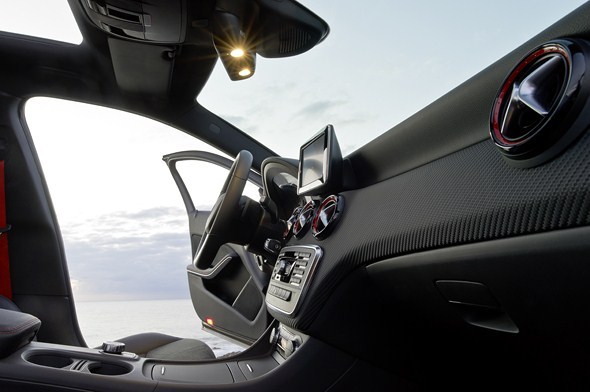
With the new A-Class, Mercedes-Benz is opening up a new chapter in the compact segment: markedly emotive in design, with powerful engines ranging from 80 kW (109 hp) to 155 kW (211 hp), extremely efficient with emissions from just 98 g of CO2/km and a best-in-class drag coefficient of 0.27.
At the same time the new model underlines that for Mercedes-Benz, safety is not a question of price – the standard specification includes, amongst other things, the radar-based COLLISION PREVENTION ASSIST system. Prices in Germany start at €23,978.50 (incl. 19% VAT) for the A 180 BlueEFFICIENCY.
“Mercedes-Benz is becoming the most dynamic premium brand in the world. As part of this development, the A-Class represents an important milestone. The A-Class is completely new, down to the last detail. In automotive development, it’s not often you get the chance to start with a clean sheet of paper.
Our engineers have made the very most of that opportunity”, explains Dr Dieter Zetsche, Chairman of the Board of Management of Daimler AG and Head of Mercedes-Benz Cars.
The design: the most progressive in the compact class
Standing as much as 160 millimetres lower on the road than the preceding model, the new A-Class communicates design and dynamism at the very first glance. This radical form language, presented and enthusiastically acclaimed around the world with the Concept A-CLASS, was consistently implemented in the series production car.
The appearance of the new A-Class reflects this new Mercedes-Benz design strategy. The result is what is known as a two-box design with a distinct character of its own, a sportily emotive exterior and an exceptionally high-quality feel to the interior.
“Translating the new dynamic style of Mercedes-Benz into the compact class was a challenge that was great fun to tackle”, explains Gorden Wagener, Head of Design at Mercedes-Benz. “No other car in this segment is as progressive as the A-Class. Absolutely typical for Mercedes is the sculptural shape of the A‑Class.
The character lines, in particular on its sides, lend the A-Class structure and terseness. The new dynamic style is perceptible at first glance in the interior as well.”
Defined edges and tautly drawn surfaces mark out the exterior design of the new A-Class. The constant interplay between concave and convex surfaces creates a characteristic play of light, particularly along the sides of the car, which contributes to its unique appearance.
Typical features of the long, sporty front are its pronounced V-shape, the separate headlamps, the radiator grille with central Mercedes star and double slats to either side of the star, as well as the additional air intakes on the sides. The “dropping line” apparent in the side profile dissipates towards the vehicle’s front end.
The design of the headlamps, together with the configuration of the light functions within them, are key elements of the design concept. The light modules and LEDs behind the headlamp cover glass have been arranged in such a way as to create the characteristic “flare effect” for the daytime driving lights and indicators.
The perfect interplay of dynamic design and excellent aerodynamics is nowhere more apparent than in the roof, with its smooth surfaces and taut, arcing curve. The silhouette reveals smooth, flowing lines finishing in a flat edge. The roof spoiler, which conveniently hides all the aerials, provides an extra sporty touch and gives structure to the roof assembly.
The broad emphasis of the tail end is revealed in an interplay of convex-concave surfaces and edges. The tail lights continue the line of the muscular shoulders back towards the rear, while their horizontal orientation emphasises the car’s powerful width.
The light functions are provided optionally by fibre-optic cables and LED modules. Here, too, the interaction between design and aerodynamics is very clear: the surface finish of the tail lights is not only an interesting design feature, but also improves the airflow around the vehicle thanks to defined airflow break-away edges in the rear section.
Interior: five-seater model with a high-value impression
The interior of the A-Class represents a big step forward in terms of quality – both in the materials used and in the consistency of the design. Both objectives have been achieved with the help of a specific design idiom and through the various combination options possible with the high-quality materials selected.
All trim elements have been given an electroplated finish, resulting in real metal surfaces with “cool touch” effect. The work has been executed with considerable care and attention to detail, so that they appear to have been moulded in one piece.
The instrument panel incorporates five round vents. The outer rings of the round vents have a high-quality electroplated finish. The airflow direction is governed by an insert that is reminiscent of an aircraft turbine and reveals a meticulous attention to detail. This too has an electroplated finish in silver-chrome. The free-standing display screen features a black piano-lacquer-look front panel and a flush-fitting silver frame.
The instrument cluster comprises two large round instruments, each with a small dial set within it. When at rest, the dial needles stand at 6 o’clock. The pointer inlays are in white, although with the sportier design and equipment lines such as Urban and AMG Sport they are in red.
The dials on the sporty equipment lines and packages are silver with a chequered flag effect. The 3-spoke steering wheel comes with 12 function buttons and an electroplated bezel.
The fact that the new A-Class is a sporty hatchback model with a low centre of gravity is reflected in its dimensions: measuring 4292 x 1780 x 1433 mm (length x width x height), it hugs the road. Compared with its predecessor, which followed a different design, the height has been reduced by 160 millimetres.
The A-Class is a five-seater model. The rears seats provide room for three passengers, despite looking like two individual seats with their sporty design. The boot volume is 341 litres, based on the VDA standard. If the rear seat backrests are folded down, its capacity jumps to 1157 litres.
In all models the seat backrests feature a 60:40 split can be folded forward individually. The width of the luggage compartment between the wheel housings is 1050 mm.
The model range: young and individual
With air conditioning, Audio 5 USB, electric windows all round, Headlamp Assist and 12-button multifunction steering wheel, the A-Class is already fully equipped even in its base configuration. With “Urban”, “Style” and “AMG Sport” appointment lines, three Design packages (“Night”, “Exclusive” and “AMG Exclusive”) as well as further optional extras, the model can be customised to suit every individual taste.
Available appointments, many familiar from higher vehicle classes, include the Intelligent Light System, electrically adjustable front seats with memory function or dashboard finished in ARTICO man-made leather (part of the Exclusive package). All three appointment lines feature front sports seats with integrated head restraints and contrasting stitching, and can be combined with all engine variants.
Further sporty details designed to appeal to the vehicle’s young target group include designo seat belts in red (available from December 2012) or silver instrument cluster with red dial pointers (part of the Urban and AMG Sport lines as well as the Exclusive and AMG Exclusive packages).
“The new A-Class is the heartbeat of a new generation at Mercedes-Benz”, stresses Dr Joachim Schmidt, Member of the Board of Management of Mercedes-Benz Cars responsible for Sales & Marketing. “We have taken the opportunity to design a completely new vehicle which sets standards in its segment. I am convinced that the new A-Class will make a significant contribution to our Mercedes-Benz 2020 growth strategy.”
Drive system: high output, low consumption
A wide choice of petrol and diesel engines meets every power requirement and reaches new heights in terms of efficiency and environmental compatibility: the A 180 CDI will be the very first Mercedes-Benz to emit only 98 g of CO2 per kilometre.
Moreover, the A 220 CDI (available from December 2012) already meets the Euro 6 emission standard which only comes into force in 2015. All engines of the new A-Class feature the ECO start/stop function as standard.
The engines can be combined with the new six-speed manual transmission or optionally with the 7G-DCT dual clutch automatic transmission, which ideally combines comfort and sportiness. Fuel consumption down by up to 35 percent compared to comparable preceding models, accompanied by a considerable power increase: these are the salient features of the engine range for the new A-Class.
Diesel engines: three efficient power bands
The new basic engine in the OM 607 series develops 80 kW (109 hp), delivers 260 Nm to the crankshaft and with a manual transmission consumes 3.8 litres per 100 km, corresponding to 98 g of CO2/km. This is a 22-percent improvement over the only 60 kW (82 hp) preceding model, the A 160 CDI, which consumed 4.9 litres.
The new top diesel, the A 220 CDI, is no less than 25 percent better than its predecessor: it develops an output of 125 kW (170 hp) and 350 Nm of torque, and in combination with the 7G-DCT automatic dual clutch transmission it consumes only 4.3 litres/100 km (provisional figure). The figures for the preceding A 200 CDI were 103 kW (140 hp), 5.7 litres, and 149 g of CO2/km.
Petrol engines: turbocharging and direct injection for all
A comparison between the new and previous A 200 demonstrates what has been achieved with the petrol engines: with 115 kW (156 hp) and 250 Nm of torque, the new engine delivers superior performance but consumes only 5.4 litres/100 km (127g CO2/km – figures for the 7G-DCT), which is 26 percent less than its predecessor (100 kW, 185 Nm, 7.4 l/100 km, 174 g CO2/km).
Even the new top model with the 7G-DCT and producing 155 kW (211 hp) and 350 Nm is considerably more efficient with a consumption of 6.1 litres and CO2 emissions of 143 g.
The completely new engines and transmissions are not the only decisive factors in this exemplary efficiency. Thanks to the modular system it has been possible to select the optimally designed transmission for each diesel and petrol engine.
The overall package is rounded off perfectly with progressive aerodynamics with a Cd figure of only 0.27, as well as a number of other
improvements.
“The new four-cylinder models from Mercedes-Benz occupy a leading position by virtue of their performance, high efficiency and very low emissions. They impress with their smooth, superior power delivery and offer customers refinement at the highest level,” says Professor Dr Thomas Weber, Daimler Board Member responsible for Group Research and Mercedes-Benz Cars Development.
Suspension: agility and refined sportiness
Refined sportiness means maximum agility combined with the sense of safety, unspoilt driving stability and high levels of ride comfort which are all typical of the brand. The suspension of the new A-Class has a four-link rear axle, electromechanical power steering with assistance functions and ESP® with “Extended Traction Control” (XTC).
During development, the suspension experts made intensive use of simulations and the driving simulators at the Mercedes development centre in Sindelfingen as part of the so-called digital ride and handling test.
The preconditions for achieving dynamic handling are excellent in the A-Class. This is because compared with its predecessor the centre of gravity (24 mm lower) and seating position (174 mm lower) has been reduced significantly.
A new feature is the four-link rear axle: forces are absorbed by three control arms and one trailing arm per wheel. This means that longitudinal and lateral dynamics are virtually independent of one another. Wheel carriers and spring links are made of aluminium to reduce the unsprung masses. The goal was to achieve high lateral agility with high driving stability thanks to small sideslip angle on the rear axle.
Three chassis and suspension set-ups are available: the comfort suspension and optional sports suspension for sporty yet comfortable handling (in conjunction with the Dynamic Handling package or the AMG Sport equipment line). In addition, the A 250 Sport has a sporty, “engineered by AMG” high-performance suspension.
Altogether this results in low dynamic rolling behaviour and low start-off pitch angle. Furthermore, the vehicle also has a reduced tendency to understeer in the higher lateral acceleration range: the driver is therefore able to control changes in direction with low steering input but high steering precision.
When accelerating out of bends taken at speed, the tendency to understeer is reduced even further by “Extended Traction Control” (XTC): with this function, ESP® provides support in the form of directional stability by generating a yaw moment on the front and rear wheels located on the inside of the bend.
Safety: setting the very highest standard
In an innovative move in the compact segment, the A-Class is equipped as standard with a radar-based collision warning system with adaptive Brake Assist, a combination which lowers the risk of rear-end collisions. The COLLISION PREVENTION ASSIST system gives a visual and audible warning to alert a possibly distracted driver to identified obstacles, and prepares Brake Assist for the most precise braking response possible. This is initiated as soon as the driver operates the brake pedal decisively.
“With the new A-Class, Mercedes-Benz is setting new standards in many disciplines, not least when it comes to the area of safety”, emphasizes Prof Dr Thomas Weber, Daimler Board Member responsible for Group Research and Head of Mercedes-Benz Cars Development. “The new A-Class provides the highest standard of safety ever seen in this vehicle class.”
The democratisation of safety encompasses an array of assistance systems which have been adopted into the A-Class from the larger model series, or sometimes developed further in the A-Class. These include:
- Adaptive Highbeam Assist
- Blind Spot Assist and Lane Keeping Assist
- ATTENTION ASSIST (standard)
- Speed Limit Assist (speed limit sign recognition)
- Active Parking Assist with parking guidance
- Brake hold function
- Hill-Start Assist
- LINGUATRONIC
- Reversing camera
- DISTRONIC PLUS
Premiere in the compact class: PRE-SAFE® available for the first time
The availability of the PRE-SAFE® anticipatory occupant protection system for the A-Class marks another first in this vehicle category. This represents a further step in the on-going democratisation of this innovation, which was premiered in the S-Class in 2002.
Core features of PRE-SAFE® are reversible belt tensioning, the closing of side windows and sliding sunroof in case of critical lateral dynamics and adjustment of the fully electric front passenger seat with memory function to an ideal position for maximum effectiveness of the restraint systems. PRE-SAFE® is always activated in response to critical longitudinal and lateral dynamics and may also be triggered upon intervention by certain assistance functions.
Body: a strong basis and intelligent protection
The new A-Class has passed the brand’s rigorous programme of crash tests. This includes not only some 30 different impact configurations, which are laid down as requirements for safety ratings and international type approval, but also nine proprietary crash tests, such as the roof-drop test or the pole impact test, developed by the brand itself.
The ability of the new A-Class to satisfy requirements which go far beyond the statutory conditions in some cases is also demonstrated by an internal offset front collision test against a future luxury-segment saloon from Mercedes-Benz: despite the high impact speed and the fact that it is the smaller accident participant, the A-Class offers its occupants an intact passenger compartment and excellent chances of survival.
The scope of the restraint systems takes special account of the A-Class’s use as a family car. Great importance has been attached to the safety of the rear occupants. Belt tensioners, belt-force limiters and belt height adjusters come as standard on the outer seats.
Rear sidebags are optionally available. The driver and front passenger are provided with new thorax-pelvisbags which are able to cover the pelvis and the entire upper part of the body. A windowbag is fitted as standard for head protection.
Comprehensive iPhone® integration
This seamless integration of the iPhone® into the vehicle, in conjunction with the new revolutionary user interface design, means that Mercedes-Benz is now able to offer the Facebook generation its natural home on four wheels in the guise of the new A-Class.
Along with Facebook, Twitter and so on, the “Drive Kit Plus for the iPhone®” (expected to be available as an accessory from September and as an optional extra from the first quarter of 2013), together with the Daimler app concept, brings further digital lifestyle services and content into the vehicle.
Highlights include advanced navigation software from Garmin, with internet-based real-time traffic information, online destination searches and 3D map display.
The Drive Kit Plus for the iPhone® can already be used with the Audio 20 CD. This features a twin tuner and mp3-capable CD player as well as a Bluetooth interface with hands-free function and audio streaming. The colour display measures 14.7 cm diagonally. Thanks to a new “Cover Art” function, the title images of the music albums currently being played are shown if their details are stored in the audio file.
The Becker® MAP PILOT makes a low-cost 3D navigation function, which can also be retrofitted, available for the Audio 20 CD radio. The navigation system boasts voice-controlled input of destinations and an intuitive user interface.
Its advantages over aftermarket solutions include integrated operation via the central controls and the Audio 20 CD display, a concealed location in the glove compartment and updating via an internet portal.
The multimedia system COMAND Online now provides internet access via a web-enabled mobile phone, plus various Mercedes-Benz services on the move. These include weather information and a special destination search via Google, as well as the option of downloading a route that has been previously configured on a PC using Google Maps and sent to the car.
A new feature is the “News” app which enables news on politics, finance and technology to be called up online in the vehicle. Information is displayed in such a way that it is clearly legible while on the move.
Continuing success: the Mercedes-Benz A-Class
The A-Class has been a bestseller for a number of generations. Since its market launch in 1997, it has blazed a trail for a new vehicle class with its unique design, becoming a driving force in the compact car segment. The second generation alone, which was launched in 2005, sold more than a million examples worldwide.
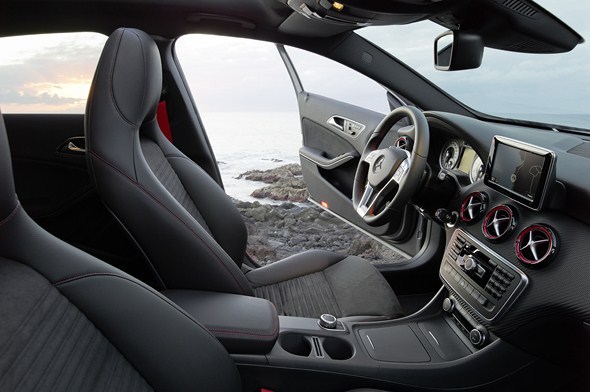
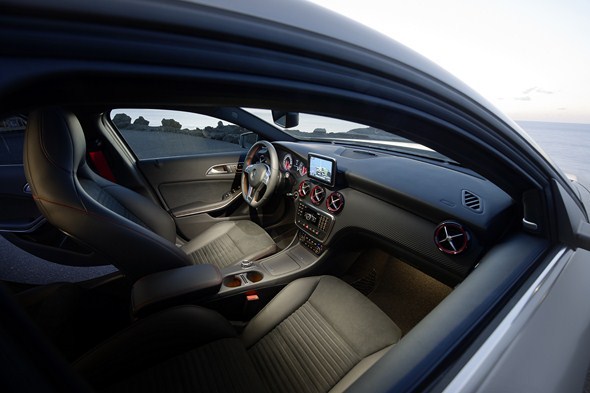
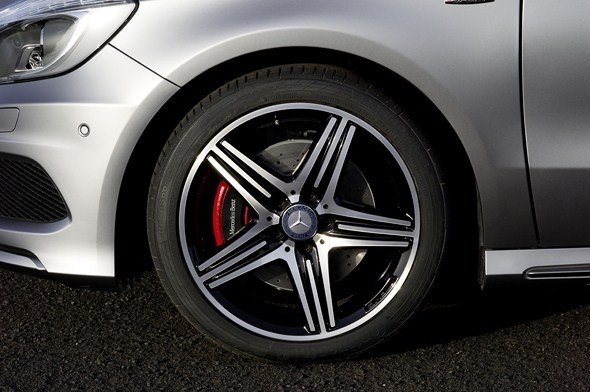
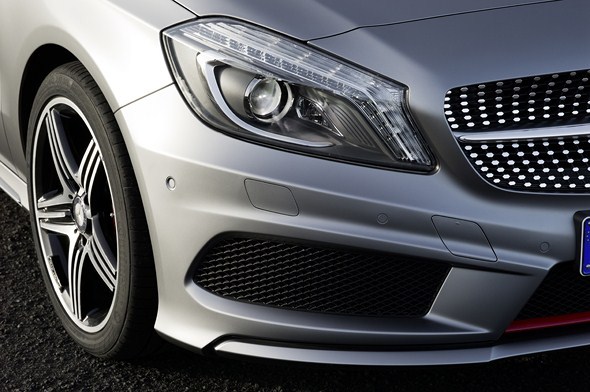
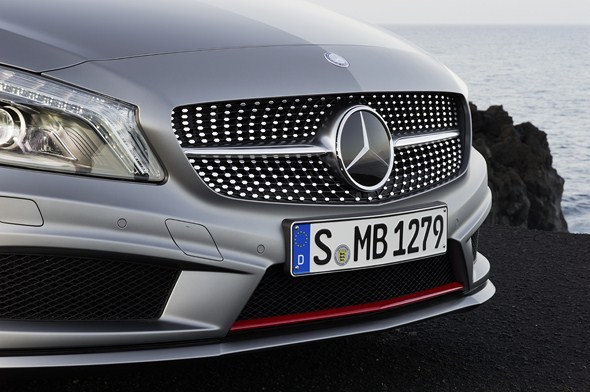
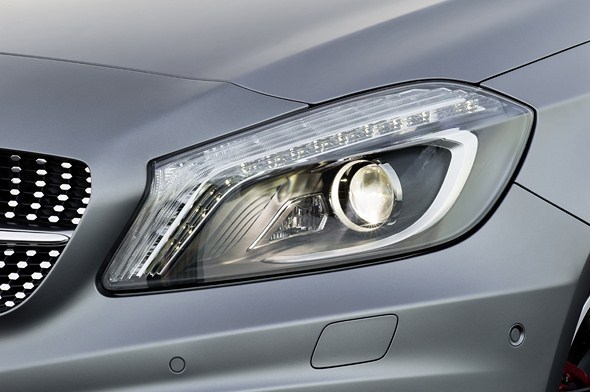
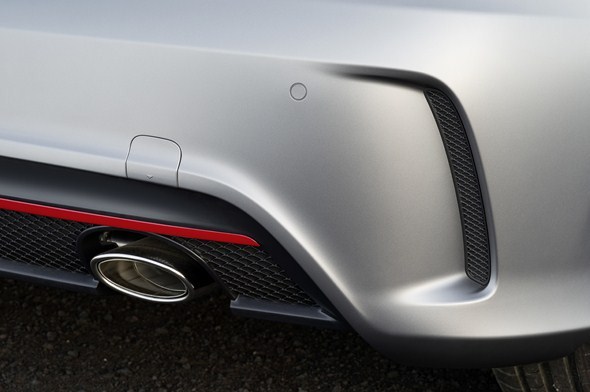
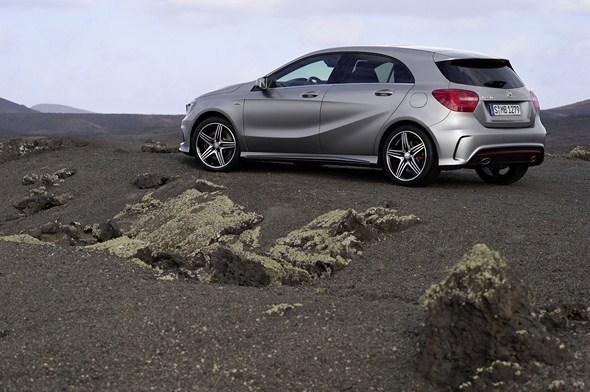
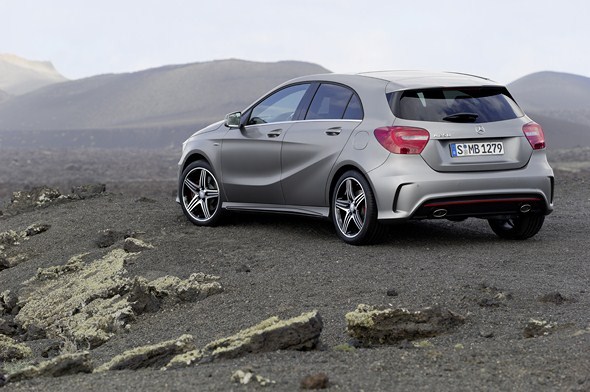
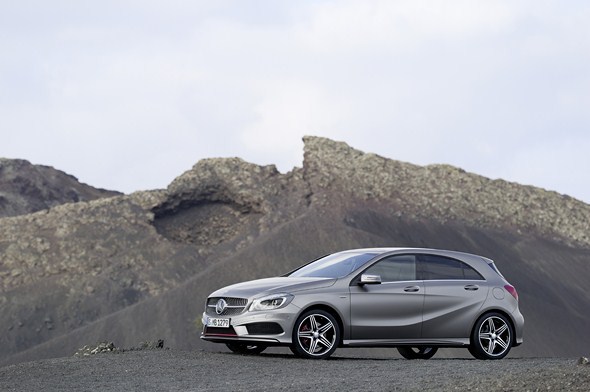
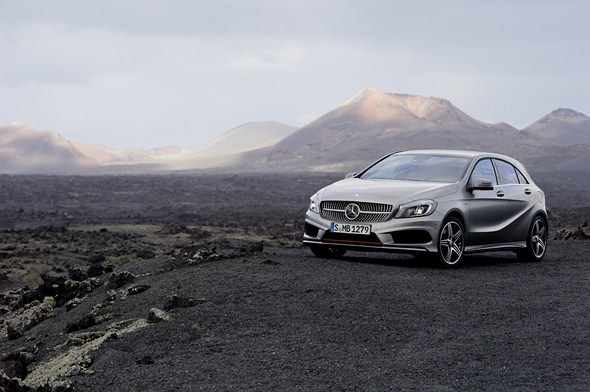
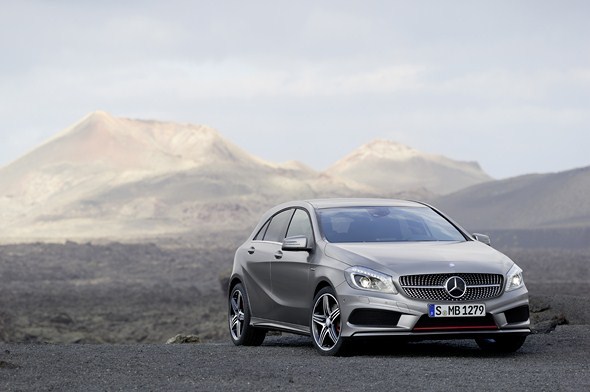
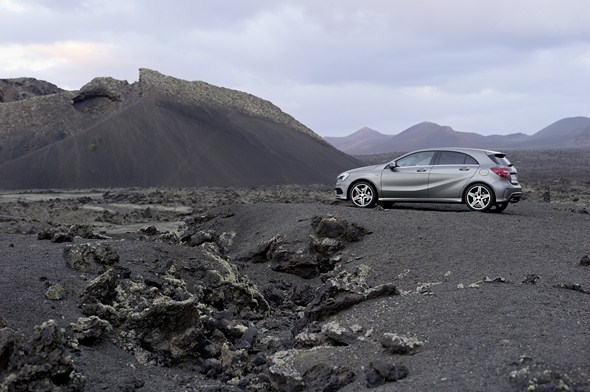
The Mercedes management team on the A-Class
“All set for attack”
“‘A’ is for attack. Mercedes-Benz is becoming the most dynamic premium brand in the world. As part of this development, the A-Class represents an important milestone. The A-Class is completely new, down to the last detail. In automotive development, it’s not often you get the chance to start with a clean sheet of paper. Our engineers have made the very most of that opportunity.”
Dr Dieter Zetsche, Chairman of the Board of Management of Daimler AG and Head of Mercedes-Benz Cars
“A new Mercedes must take the lead, in technical terms, in every class of vehicle. Whether we’re talking about efficiency, driving dynamics or safety: the new A-Class raises the benchmark significantly. Pure driving enjoyment, plus exemplary efficiency – from a technical perspective that is the quintessence of the A-Class.”
Prof Dr Thomas Weber, Member of the Board of Management responsible for Group Research and Head of Mercedes-Benz Cars Development
“With the new A-Class, the company is opening up a whole new chapter in the compact segment. The A-Class is the sporty Mercedes among the compact models. It’s the right product at the right time – and has tremendous potential to tap into new target groups and markets.”
Dr Joachim Schmidt, Member of the Board of Management of Mercedes-Benz Cars responsible for Sales & Marketing
“The A-Class is a clear statement of the dynamism of the Mercedes-Benz brand. No other car in this segment is as expressive as the A-Class. The almost sculptural lines of the A-Class are very typical for Mercedes. The feature lines, particularly along the sides of the car, give the A-Class structure and tautness. This new sense of dynamism is also immediately apparent in the interior.” Professor Gorden Wagener, Head of Design, Mercedes-Benz Cars
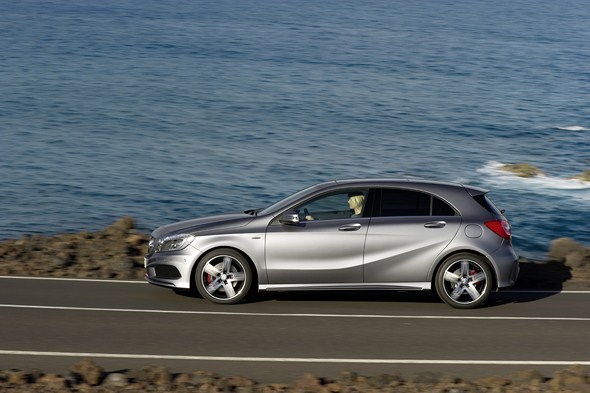
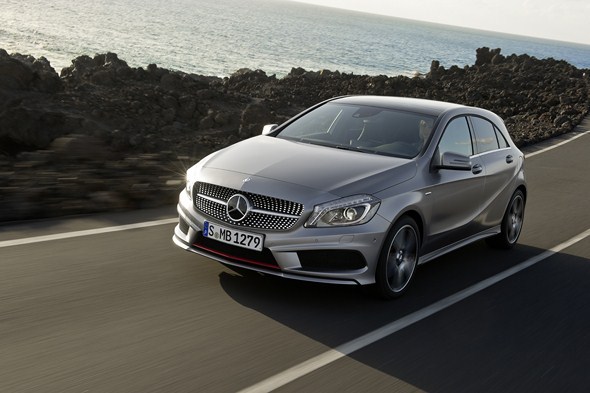
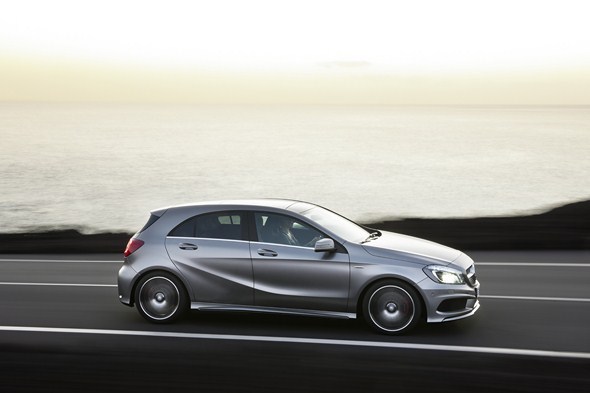
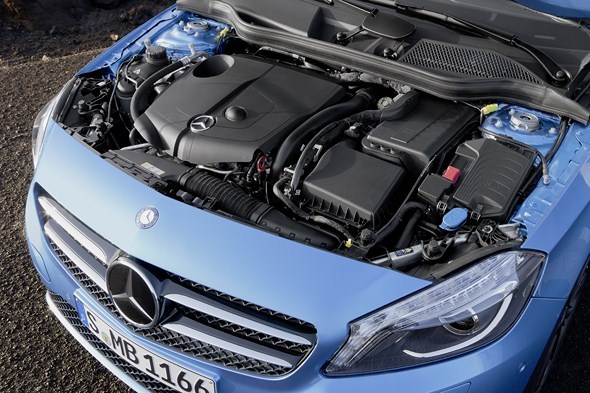
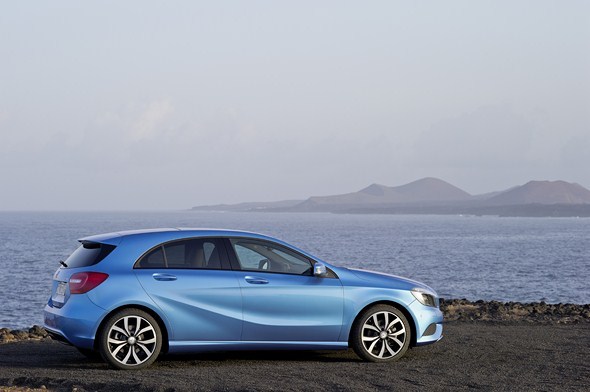
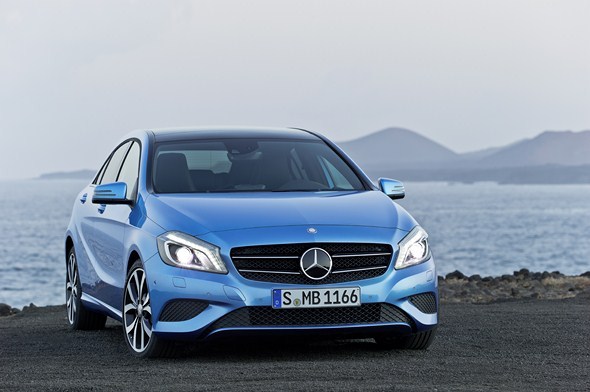
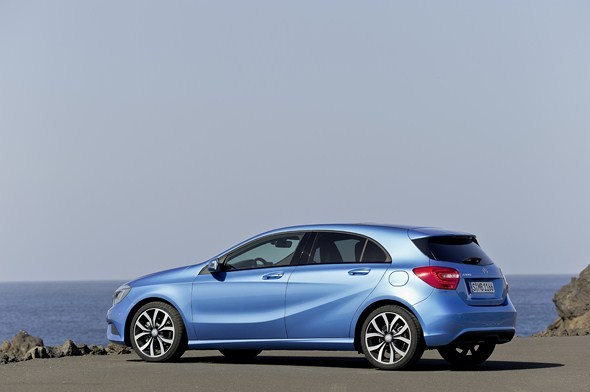
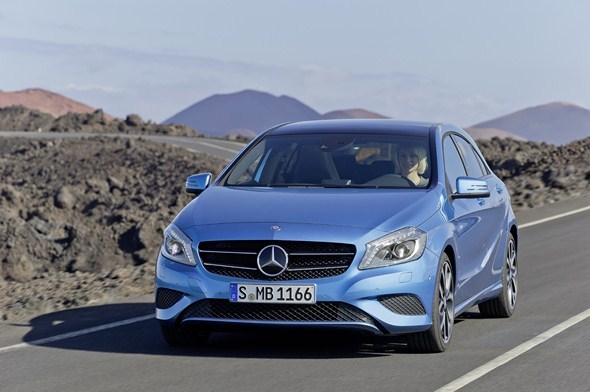
Exterior design
The most progressive design in the
compact class
Standing as much as 18 centimetres lower on the road than the preceding model, the new A-Class communicates design and dynamism at the very first glance. This radical form language, presented and enthusiastically acclaimed around the world with the Concept A-CLASS, was consistently implemented in the series production car. The appearance of the new
A-Class reflects this new Mercedes-Benz design strategy. The result is what is known as a two-box design with a distinct character of its own, a sportily emotive exterior and an exceptionally high-quality feel to the interior.
“Translating the new dynamic style of Mercedes-Benz into the compact class was a challenge that was great fun to tackle”, explains Gorden Wagener, Head of Design at Mercedes-Benz. “No other car in this segment is as progressive
as the A-Class. Absolutely typical for Mercedes is the sculptural shape of the
A-Class. The character lines, in particular on its sides, lend the A-Class
structure and terseness. The new dynamic style is perceptible at first glance
in the interior as well.”
Defined edges and tautly drawn surfaces mark out the exterior design of the new A-Class. The constant interplay between concave and convex surfaces creates a characteristic play of light, particularly along the sides of the car, which contributes to its unique appearance.
Typical features of the long, sporty front are its pronounced V-shape, the
separate headlamps, the radiator grille with central Mercedes star and double slats to either side of the star, as well as the additional air intakes on the sides. The “dropping line” apparent in the side profile dissipates towards the
vehicle’s front end. The design of the headlamps, together with the
configuration of the light functions within them, are a key element of
the design concept.
The light modules and LEDs behind the headlamp cover glass have been
arranged in such a way as to create the characteristic “flare effect” for the
daytime driving lights and indicators. The so-called “flare” is made up of the feature line within the headlamp, the LED modules for the daytime running lamps and the bulb sets for the indicators. This signature effect gives the car
its energetic look and so helps to define a new, youthful face for Mercedes.
The perfect interplay of dynamic design and excellent aerodynamics is
nowhere more apparent than in the roof, with its smooth surfaces and taut, arcing curve. The silhouette reveals smooth, flowing lines finishing in a flat edge. The roof spoiler, which conveniently hides all the aerials, provides an extra sporty touch and gives structure to the roof assembly. The beltline rises to the rear to form a pronounced wedge-shape. The side view is distinguished by sensuously moulded sculptural side panels and crisp lines. The front
structural edge, above the wing, falls in what is known as a “dropping line”
in a gentle arc towards the rear. The powerfully-shaped shoulder muscles above the rear axle serve to emphasise the car’s coupé-like character. A further line sweeps up from just in front of the rear wheel arch, then gently fades away. All these lines give depth and dynamism to the car’s profile. Dynamic side sill panels provide a final finishing touch towards the bottom of the car, enhancing the appearance of elegant light-footedness.
The broad emphasis of the tail end is revealed in an interplay of convex-concave surfaces and edges. The tail lights continue the line of the muscular shoulders back towards the rear, while their horizontal orientation emphasises the car’s powerful breadth. The light functions are provided optionally by fibre-optic cables and LED modules. Here, too, the interaction between design and aerodynamics is very clear: the surface finish of the tail lights is not only an interesting design feature, but also improves the airflow around the vehicle thanks to defined airflow break-away edges in the rear section.
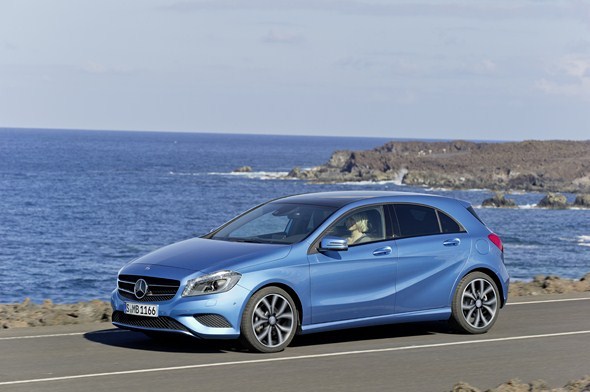
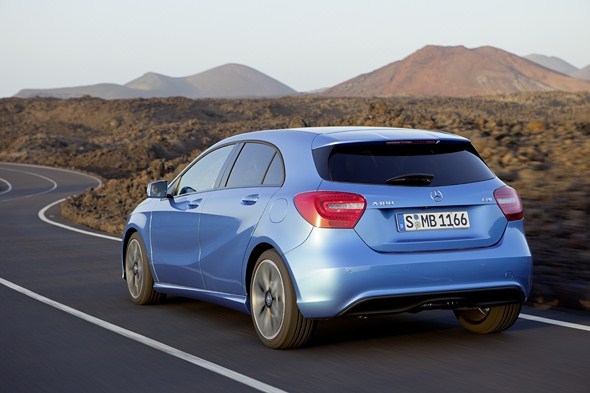
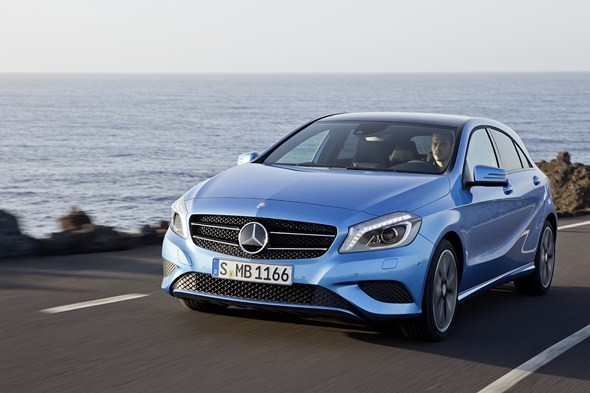
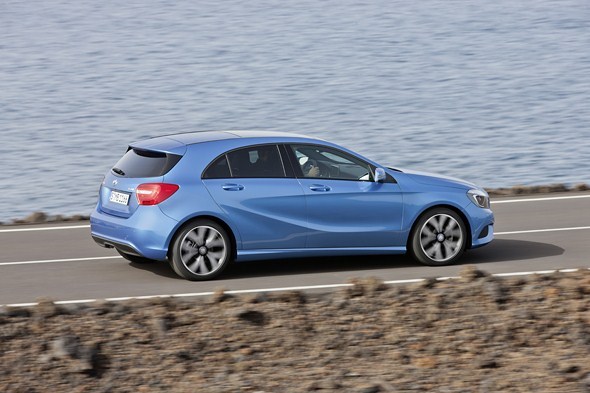
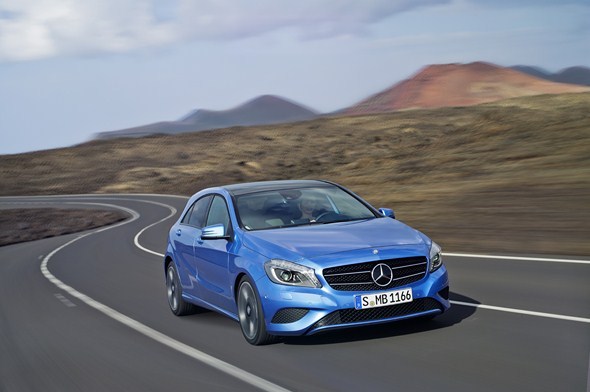
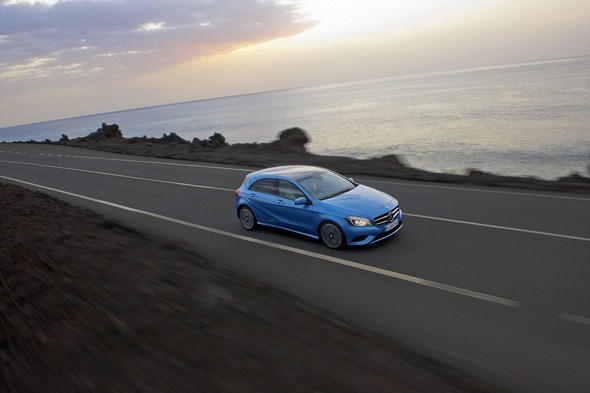
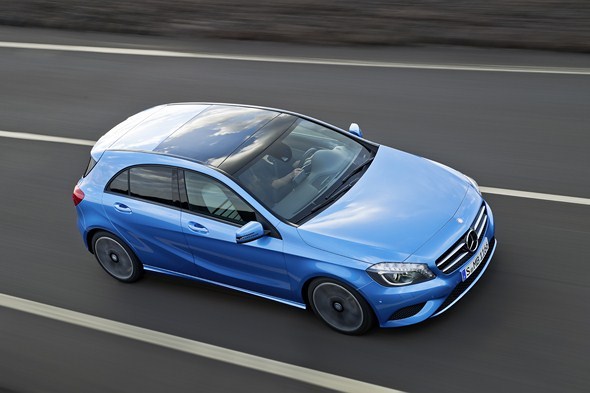
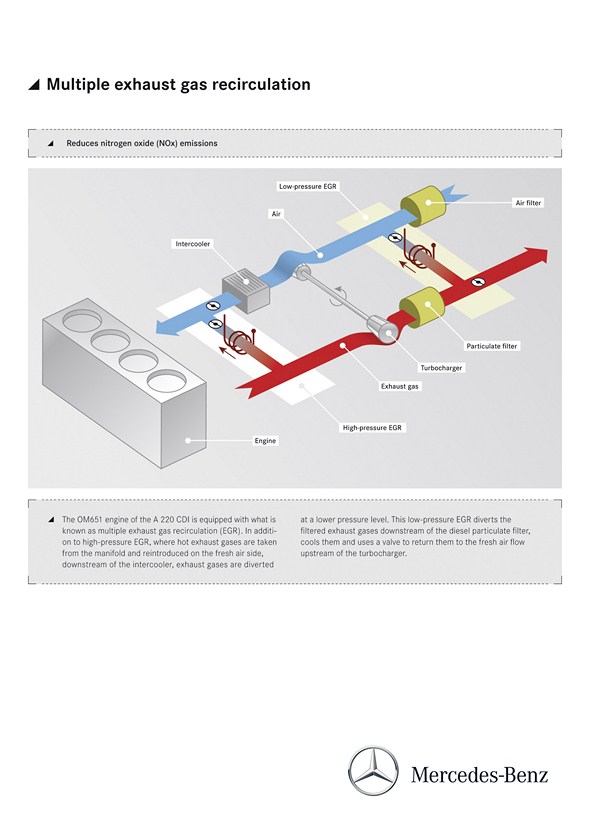
Interior design
Extraordinary perceived value
The starting point for the interior design was the interior sculpture
“Mercedes-Benz Aesthetics No. 2” presented at the Detroit Motor Show
in 2011 and which directed attention to the new Mercedes-Benz design
language in the vehicle interior, too. The first concrete implementation
of this was shown in April 2011 with the “Concept A-CLASS”.
“The inspiration from aircraft design is continued in the A-Class”, explains designer Jan Kaul. “The instrument panel is clearly divided into an upper
part inspired on a wing profile and a muscular lower section. This creates
the impression that the upper section is supported by a muscle.”
The process used for the production of this muscle allows diverse soft surface textures. It is thus possible to create different surface appearances with an attractive play of lights thanks to three-dimensional structures embedded
in foil.
“The interior of the A-Class represents a big step forward in terms of quality – both in the materials used and in the consistency of the design” says Kaul. Both objectives have been achieved with the help of a specific design idiom
and through the various combination options possible with the high-quality materials selected. All trim elements have been given an electroplated finish, resulting in real metal surfaces with “cool touch” effect. The work has been executed with considerable care and attention to detail, so that they appear to have been moulded in one piece.
The instrument panel incorporates five round vents. “Like brilliant jewels they underscore the superior quality of the vehicle interior”, explains Kaul. The outer rings of the round vents have a high-quality electroplated finish. The airflow direction is governed by an insert that is reminiscent of an aircraft turbine and reveals a meticulous attention to detail. This too has an electroplated finish in silver-chrome. The free-standing display screen features a black piano-lacquer-look front panel and a flush-fitting silver frame.
The instrument cluster comprises two large round instruments, each with a small dial set within it. When at rest, the dial needles stand at 6 o’clock. The pointer inlays are in white, although with the sportier design and equipment lines such as Urban and AMG Sport they are in red. The dials on the sporty equipment lines and packages are coloured silver with a chequered flag
effect. The 3-spoke steering wheel comes with 12 function buttons and an
electroplated bezel.
The centre dome and console, as well as the positioning of the various elements such as the head unit, lower control panel, air conditioning operating unit, stowage compartments, rotary pushbutton and armrest, reflect the findings
of the ergonomics experts at Mercedes-Benz.
An extensive range of seat coverings, in terms of material (e.g. leather, fabric, ARTICO/fabric), colour combination and also geometry, provides scope for a broad range of individualisation options. Sports seats with integrated head restraints are available with all optional design and equipment lines. The sporty nature of the seats is emphasised by the opening between the upper edge of the seat backrest and the head restraint. On the back of the front seats this opening is edged with a frame in silver chrome and, in conjunction with the Light and Sight package, can also feature ambient lighting.
Designer Jan Kaul sums up: “If you were to take a seat in the A-Class with your eyes closed – you would never think, upon opening your eyes, that you were sitting in a compact-class vehicle.”
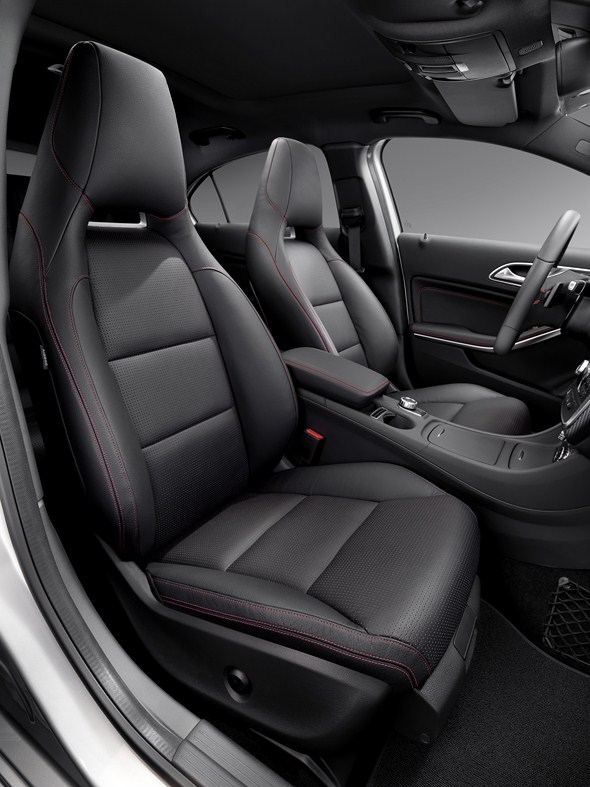
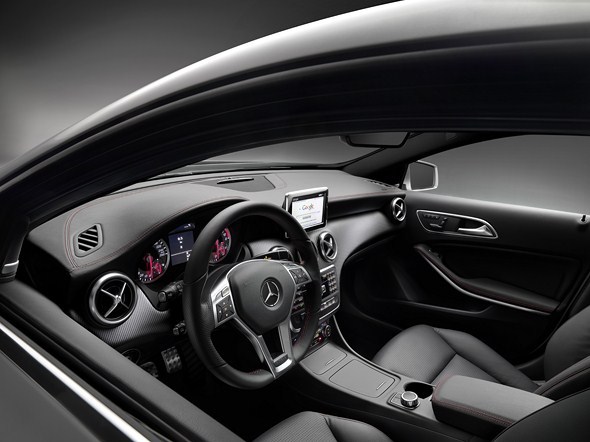
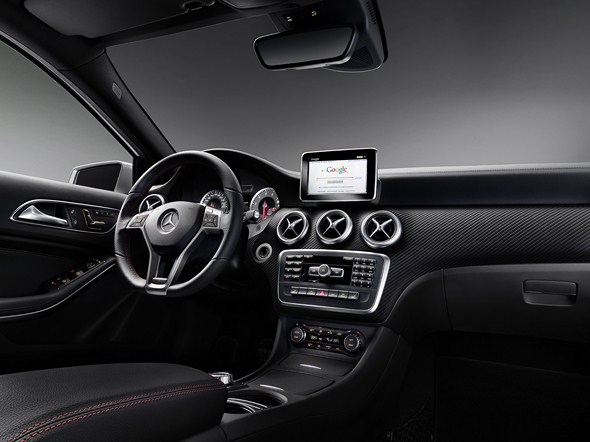
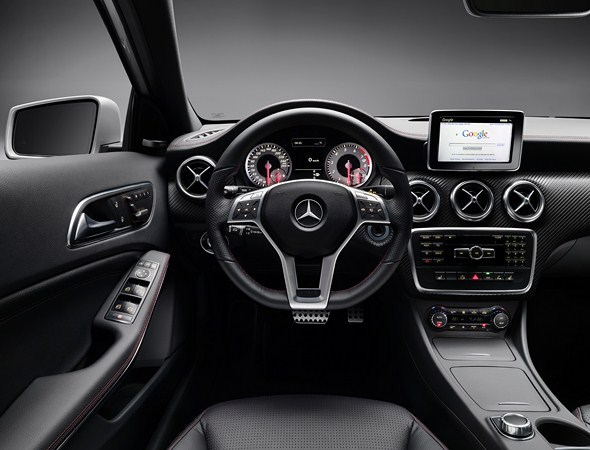
Interview with Mark Fetherston, A-Class designer
“The A-Class puts an end to boredom in
this segment”
Mark Fetherston (35) earned his graduate degree in Transport Design at
Coventry University in 1999. Since then he has worked at Mercedes-Benz, and one of his last projects involved working on the design of the SLS AMG super sports car.
Mr Fetherston, did you have to overcome particularly great resistance in the
company in order to implement series production of the expressive, emotional design of the new A-Class, which does break with some preconceptions towards the brand?
Fetherston: To be quite honest – at first I wouldn’t have imagined that at
Mercedes we would dare to build such a car. But the Board gave us wide-ranging freedom in respect of the design of the A-Class. Indeed, they even
encouraged us to be more progressive.
If you are so clearly breaking new ground – what is it that makes this new A-Class a true Mercedes, then?
Fetherston: The sculptural quality of the A-Class’s form is typically Mercedes. This traditionally distinguishes Mercedes-Benz from other brands. We made the A-Class sculpture in clay by hand – you can’t do this on the computer. Look for instance at the muscular shape of the shoulder above the rear axle. The character lines, in particular on the vehicle sides lend this sculpture structure and terseness. The Dropping Line is an elegant link to the Mercedes heritage, the high side sill line provides dynamism. The A-Class is a clear statement of the dynamism of the Mercedes-Benz brand.
One of your last projects was the state-of-the-art SLS AMG gullwing. What is
more difficult to design – a super sports car or a compact-class Mercedes?
Fetherston: In terms of dynamics, a super sports car is easier to design –
because its proportions are intrinsically dynamic. But that is precisely why
the challenge of implementing the sporty dynamics of Mercedes-Benz in the compact class was such fun.
And apart from the SLS AMG super sports car, what else served as inspiration
in the first design phase?
Fetherston: Nature itself is a very important source of inspiration; take for
instance the way the wind sculpts sand into sand dunes – magnificent. One can also observe beautiful shapes in winter landscapes. I love aircraft, too. One of the greatest designs of all times is the Concorde – sheer aerodynamics. And even though it may seem a bit like a cliché – when you see the A‑Class from the front, you can be reminded of a wild cat, a lion or a cheetah. Aggressive and sleek.
We thought of another likeness when we saw the A-Class for the first time: in the compact-car segment, the new A-Class is like the face in the crowd…
Fetherston: Yes, no other car is so progressive in this vehicle class. The A-Class puts an end to boredom in this segment.
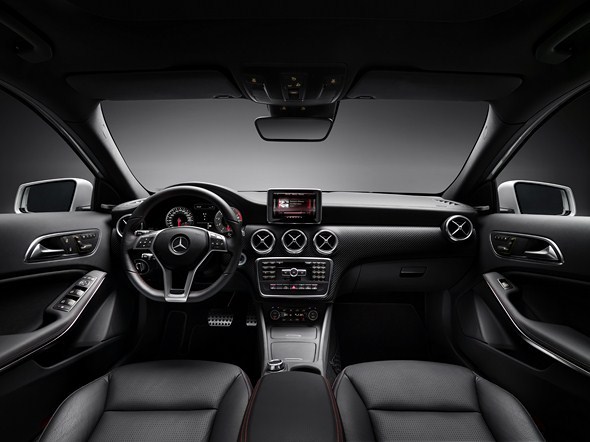
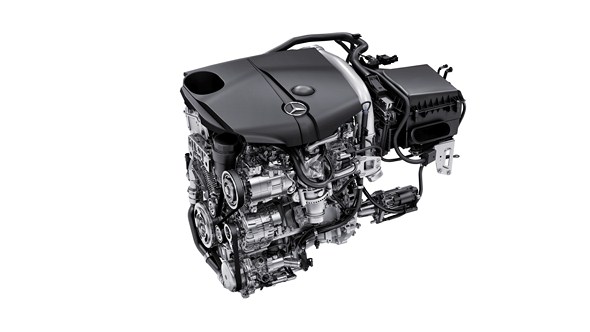
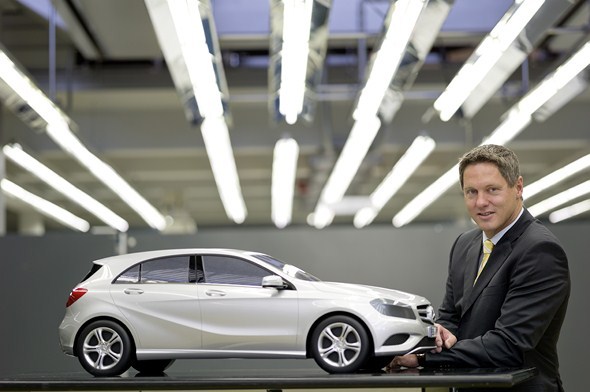
The model range
‘A’ is for all-inclusive
With air conditioning, Audio 5 USB, electric windows all round, Headlamp Assist, 12-button multifunction steering wheel and the comprehensive safety package including COLLISION PREVENTION ASSIST, the A-Class
is already fully equipped even in its base configuration. With “Urban”, “Style” and “AMG Sport” appointment lines, three Design packages as
well as further optional extras, the model can be customised to suit every individual taste. Available appointments, many familiar from higher
vehicle classes, also include the Intelligent Light System, electrically
adjustable front seats with memory function or dashboard finished in
ARTICO man-made leather. Further sporty details designed to appeal to the vehicle’s young target group include designo seat belts in red or the sporty instrument cluster featuring a “chequered flag” design.
All three design and equipment lines can basically be combined with all engine variants. The “Style” line has a radiator grille with two slats in the vehicle
colour and chrome inserts, and the waistline trim strip is finished in a chrome look. The stylish appearance is enhanced further with light-alloy wheels
featuring a 10-spoke design and measuring either 16 inches (all models
except for the A 250 BlueEFFICIENCY) or 17 inches (A 250 BlueEFFICIENCY). Highlights in the interior include matrix-look trim elements as well as front sports seats in ARTICO man-made leather/Messancy fabric with contrasting stitching. Contrasting stitching is also to be found on the armrests on the
centre console and the doors. The gear lever has a silver chrome surround.
The ring around the headlamp switch and the nozzle crosses on the air vents
in the dashboard are also finished in silver chrome.
Practical details of the “Style” line include the Seat Comfort package (with height adjustment for the front passenger seat and seat cushion angle
adjustment for driver and front passenger), multifunction holder in the
centre console and 12 V socket in the rear.
A particular feature of the “Urban” line is the sporty instrument cluster with silver-coloured circular instruments, “chequered flag” design and red dial pointers. This is matched by the checked pattern of the trim elements. The dynamic impression continues with the sports seats with upholstery in
ARTICO man-made leather/Larochette fabric. Contrasting stitching is used on the seats, armrests, multifunction steering wheel and the gear lever in nappa leather. The 3-spoke steering wheel also has a perforated grip area. The Seat Comfort package, multifunction holder in the centre console and 12 V socket in the rear again come as standard, as does the chrome finish on the headlamp switch and nozzle crosses. Distinctive characteristics of the exterior include the twin-pipe exhaust system with oval tailpipe trim in polished stainless steel and the radiator grille with silver-coloured twin slats with chrome highlights. The “Urban” line also features a chrome-look waistline trim strip and 17-inch 5-twin-spoke light-alloy wheels.
“AMG Sport” is the name of the third equipment line, which again is available for all engine variants. This is the line in which the colour red comes into play: it features in the contrasting stitching on the sports seats (with upholstery
in ARTICO man-made leather/DINAMICA microfibre), the nappa leather
multifunction steering wheel with flattened bottom section, and the armrests. This is matched with the sporty instrument cluster with silver-coloured
circular instruments, “chequered flag” design and red dial pointers as well as sports pedals in brushed stainless steel with rubber studs. Trim elements
feature a chrome-look finish, and the front and rear door sill panels are made of aluminium. The sporty theme is continued with the exterior: as standard the “AMG Sport” model boasts a twin-pipe exhaust system with oval tailpipe trim in polished stainless steel, silver-painted radiator grille with chrome inserts, 18-inch AMG multi-spoke light-alloy wheels and AMG bodystyling (front and rear aprons and side sill panels). Those opting for the “AMG Sport” model will also get an A-Class with a sports suspension, lowered body and Direct-Steer system. The front brake discs are also perforated.
Even more dynamic: the A 250 Sport
In the case of the A 250 Sport, the “AMG Sport” appointment line is available as standard. The visual affinity to the Concept A-CLASS is especially evident with these models – particularly due to the new diamond grille. The A-Class Sport features exclusive 18-inch AMG light-alloy wheels in a 5-spoke design with 235/40 R 18 tyres all round and painted in high-gloss black with a
high-sheen finish, together with red-painted brake callipers. These give an indication of the vehicle’s particularly dynamic driving qualities which are characterised, amongst other features, by a special AMG-developed front axle and a suspension that has been configured to match. With its special engine and transmission configuration, the A 250 Sport also provides a very special driving experience which is enhanced further by the emotionally appealing sound of the modified exhaust system.
Hints of red on the AMG front and rear aprons also serve to emphasise the expressive positioning of the new model. In conjunction with Intelligent Light System or bi-xenon lights, the headlamps also have red highlight rings. The contrast between black trim and additional accents in red continues in the interior: the contrasting decorative topstitching on the steering wheel and seats is in this same bright shade, as are the seat belts. The highlight rings of the air vents are similarly finished in red.
Even more choice: the three Design packages
Further individualisation options are possible with the three Design packages which are available for all engine variants. The “Night package” builds on the scope of equipment making up the Style, Urban, and AMG Sport lines as well as the Sport model and supplements them further with a variety of different, additional appointments. The exterior highlights include:
- gloss black radiator grille with chrome inserts (except the A 250 Sport)
- black-painted exterior mirrors (not in conjunction with magno and black metallic paint finishes as in those cases they are in the vehicle colour)
- beltline trim strip in high-gloss black
- heat-insulating dark-tinted glass as of B-pillar
- 18-inch 5-twin-spoke light-alloy wheels painted in matt black
and with a high-sheen finish (in conjunction with AMG Sport:
AMG 5-twin-spoke light-alloy wheels)
The Exclusive package, which can be chosen in addition to one of three equipment lines, does full justice to its name, featuring a high-quality
interpretation of the compact class with leather sports seats, dashboard and door centre panels in ARTICO man-made leather with contrasting stitching, and also trim elements in the appointments colour. The scope of equipment includes a 3-spoke leather steering wheel with 12 function buttons, as well as an infrared receiver in the driver’s door (summer opening/closing function), electric 4-way lumbar support on the front seats and heated seats.
The “AMG Exclusive package“, which is only available in conjunction with the “AMG Sport” equipment line and cannot be combined with the Exclusive package, comprises the following details:
- heated front sports seats with black RED CUT leather upholstery with red contrasting stitching as well as 4-way lumbar support
- dashboard in ARTICO man-made leather with red contrasting (upper part) and high-gloss headlamp switch with silver-chrome surround ring and air vents with silver-chrome surrounds and crosses
- cover over the stowage compartment in the centre console
- infrared receiver in the driver’s door (summer opening/closing
function)
From ‘A’ for accessories to ‘X’ for xenon: additional optional extras
The A-Class is optionally available with bi-xenon lights instead of halogen lights. The latter are furthermore optionally combinable with the Intelligent Light System (ILS). ILS, which is familiar from other Mercedes model lines, comprises bi-xenon headlamps with variable light distribution and dynamic headlamp range for country roads, motorways and dense fog, Adaptive
Highbeam Assist, active light function, LED daytime driving lights and
headlamp cleaning system.
The Light and Sight package comprises the following details:
- indirect illumination of front and rear door handles/door openers
- front and rear footwell illumination
- illuminated vanity mirrors for driver and front passenger
- illuminated interior mirror
- illuminated stowage compartment in the centre console
- reading lights and console light in the roof lining in the rear
- illuminated door sill panels
- illuminated openings in the front and rear head restraints
(sports seats only) - courtesy and warning lights for driver and front passenger
- warning and ambient lighting in the boot lid
- windscreen wipers with rain sensor
A reversing camera is optionally available starting with the Audio 20 CD. This is activated automatically when reverse gear is engaged. It supports the driver during lengthways and crossways parking manoeuvres by means of static and dynamic guide lines indicating the vehicle’s line of travel and clearances.
Active Parking Assist offers even greater comfort here (see section “Driving assistance systems”).
Internet access, the convenient LINGUATRONIC voice control system, two
navigation solutions tailored to different budgets, connection for mobile audio devices, iPhone® integration and an intuitive operating concept – the A-Class offers information and communication systems with a superior level of functionality which to date has been the reserve of higher vehicle classes.
For details see the section on “Multimedia systems”.
Fitted as standard to each A-Class is the THERMATIC manual air
conditioning system. Just like the THERMOTRONIC two-zone automatic
air conditioning system (optional extra), it has been enhanced in a number
of areas. The air conditioning systems now feature noticeably quieter and
vibration-free operation, since the blower motor has been mechanically isolated from the housing using special rubber elements. Furthermore, the equipment features optimised air intake in snow and more manual blower settings. An important development goal was also the efficient handling of the drive energy. The air conditioning compressor is operated based on actual requirements,
and in dry weather or at temperatures at which no cooling is necessary, the compressor is automatically and steplessly throttled back.
Other optional extras include front seats with memory function, automatic dimming interior and exterior mirrors, designo seat belts in red (expected to be available from the fourth quarter of 2012) for driver and front passenger and rear outer seats, electrically operated panoramic sliding sunroof,
auxiliary heating, folding trailer coupling and a Stowage Space package. The latter comprises a spectacles compartment in the overhead control panel, stowage boxes beneath the front seats, nets beneath the parcel shelf, in the front passenger footwell, on the front seat backrests and on the left and
right of the luggage compartment, as well as a 12 V socket in the luggage
compartment.
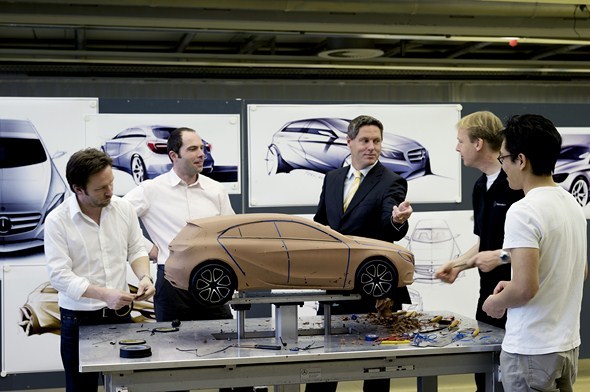
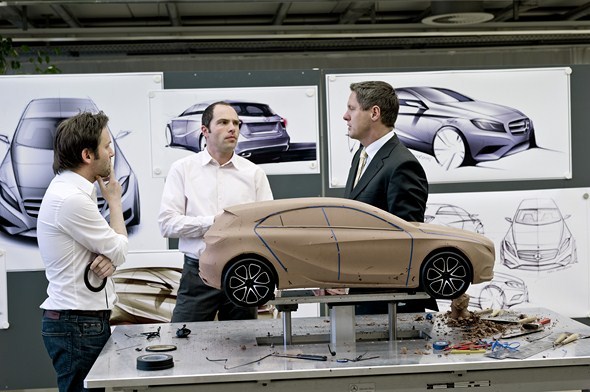
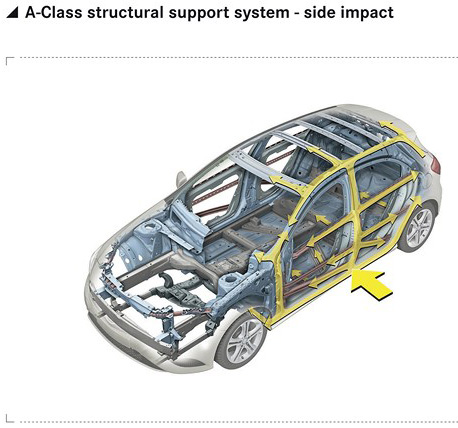
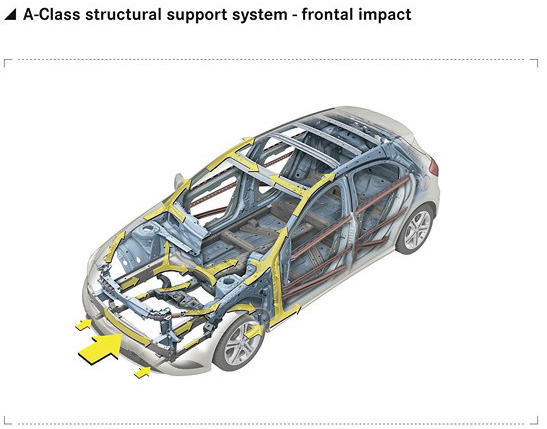
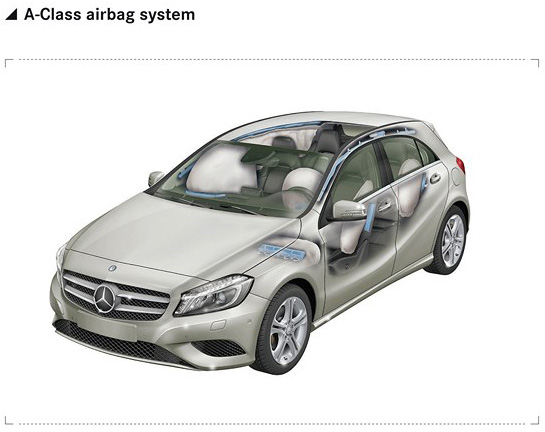
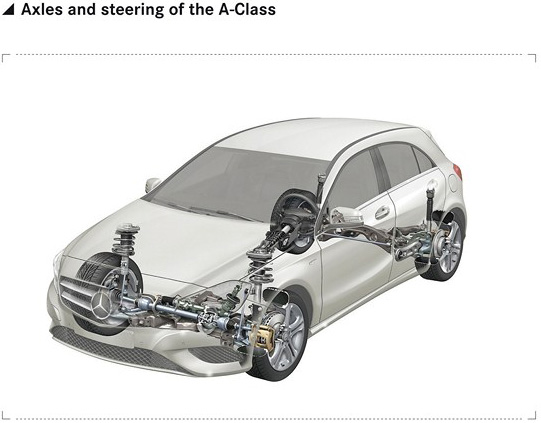
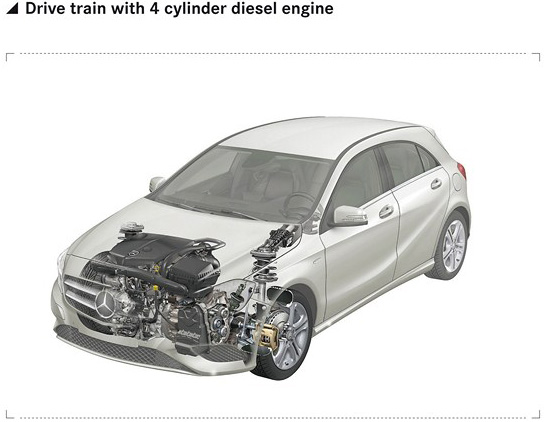
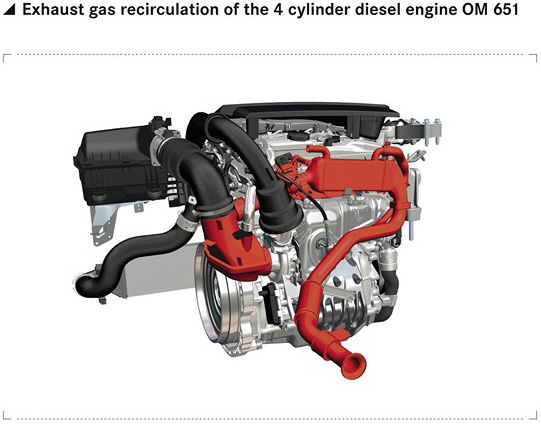
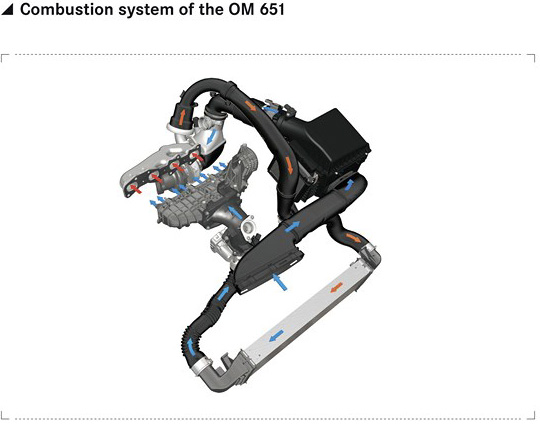
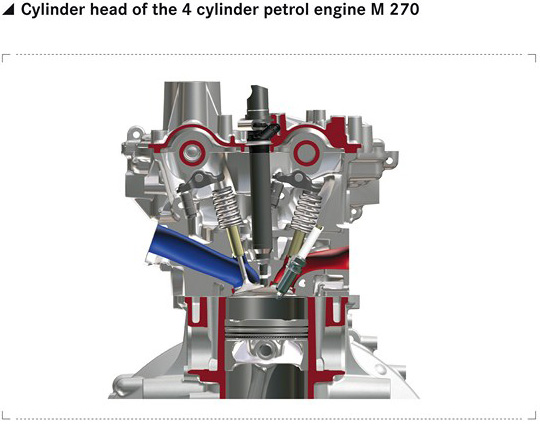
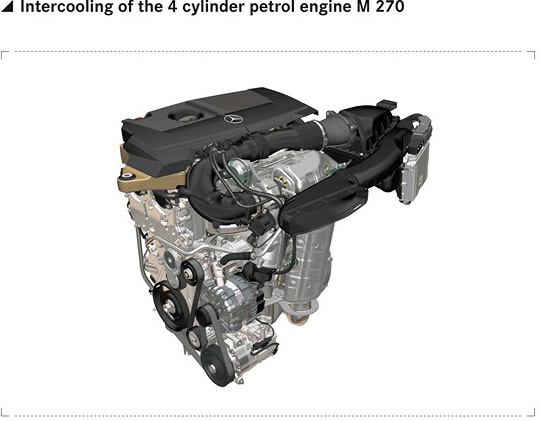
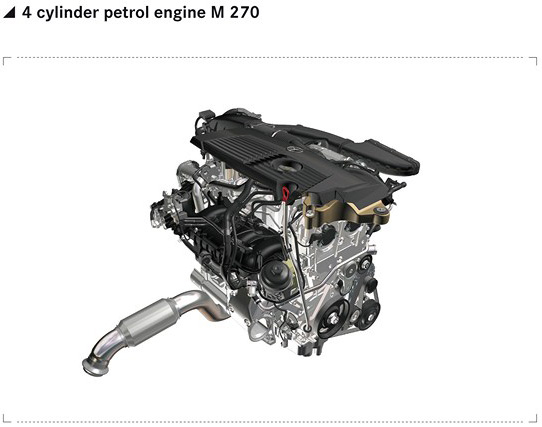
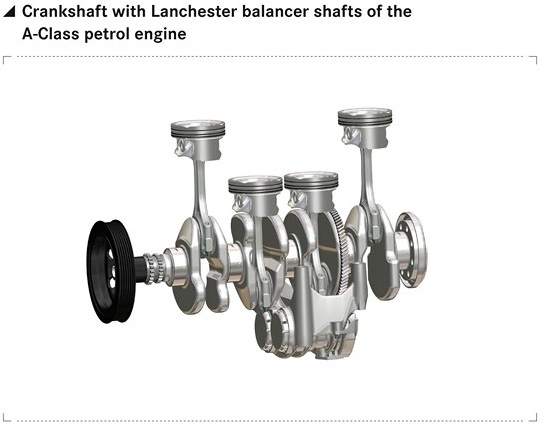
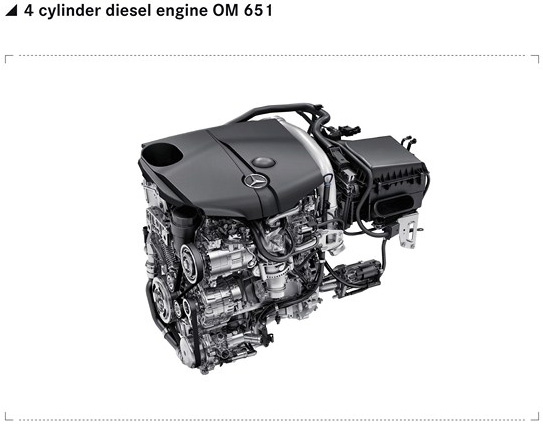
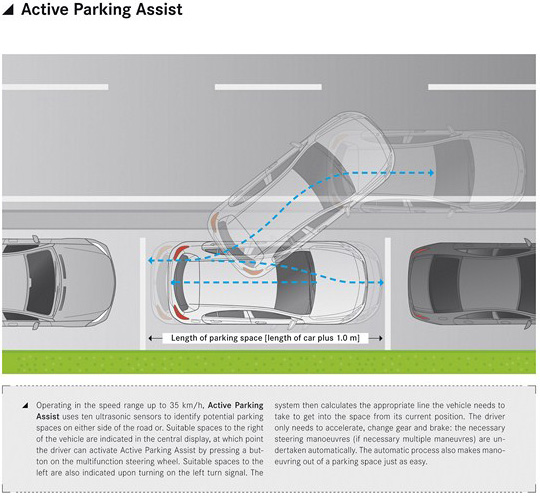
Aerodynamics
Saving fuel the aerodynamic way
With a drag coefficient (Cd) value of 0.27, the aerodynamic experts at
Mercedes-Benz succeeded in creating another masterpiece with the A-Class. And the A 180 BlueEFFICIENCY Edition due to follow later is even able
to exceed this record for hatchback vehicles: thanks to a number of
aerodynamic enhancements, this beacon of efficiency achieves a Cd value
of 0.26.
Countless flow simulation studies on the computer and a great deal of fine
tuning in the wind tunnel resulted in a clear goal: to enhance the basic shape of the A-Class design further, with a view to achieving an exceptional drag coefficient. This is no easy task, particularly for a hatchback model with a short rear overhang. But an improvement in the Cd value of just one hundredth will reduce fuel consumption by one tenth of a litre per 100 km when driving on the motorway at approx. 120 km/h. Based on NEDC figures, this corresponds
to a CO2 reduction of one gram per kilometre.
With a Cd value of 0.27 and a frontal area of 2.20 m2, the drag area (CdA) is less than 0.6 m2 – a benchmark figure for hatchback vehicles in this segment.
The detailed work behind this development is highlighted by the following examples:
- The distinctive side spoilers next to the rear window (“finlets”) help
to create a run-on design which significantly reduces the disruptive longitudinal vortices generated at the D-pillars. - Flow losses at the front wheel arches have been reduced substantially with the aid of patented serrated wheel spoilers at front and rear, slots in the wheel arches and optimised hub caps. These measures result in improved wind flow around the wheel arches.
- The A-Class has an adjustable radiator shutter, already familiar in
larger model series. The louvres behind the radiator grille are for the most part closed when there is no specific need for cooling air.
- The A-Class has an adjustable radiator shutter, already familiar in
- The underbody has also been aerodynamically enhanced: the main floor panel features extensive cladding up to the rear wheel arch,
followed by additional cladding of the rear axle. The rear silencer has also undergone aerodynamic optimisation. - The new A-Class features exterior mirrors which have been optimised in terms of a number of details and already proven their excellent
aerodynamic properties in large model series such as the S, E and
C-Class, and also the B-Class. The position of the exterior mirror is
adjusted in respect of the A-pillar in such a way that the airflow is
directed along the side window without any significant interference
or disruption.
The exterior mirrors and the low stepped height of the A-pillars reflect the fact that the work conducted in the wind tunnel was not just about optimising the flow conditions, but also about minimising wind noise. And in addition to
aerodynamics and aeroacoustics, there is often another discipline to consider: in terms of water management too, the flow around the exterior mirrors and the A-pillars also has to be optimised in the wind tunnel in order to guarantee good visibility is maintained towards the rear and at the sides during wet weather.
More than with previous model series, in the case of the A-Class the
aerodynamics experts at Mercedes-Benz made particular use of flow simulation (CFD, Computational Fluid Dynamics): each component was first improved over several cycles using flow simulation before having its aerodynamic
properties put to the test in the wind tunnel.
Digital flow simulation is based on so-called finite volumes as a mathematical model. A volume net is formed from around 60 million hexahedrons, or cubes, and is based around the CAD data of the new A-Class. This enables the driving cycle to be simulated over a free area in a large virtual wind tunnel. The
Mercedes engineers generate the airflow using a predetermined turbulence level.
Setting new standards in terms of Cd value and consumption:
BlueEFFICIENCY Edition
Due to follow later is the A 180 CDI BlueEFFICIENCY Edition boasting even better consumption levels. It is among the most efficient vehicles of its class: thanks to a series of additional aerodynamic optimisation measures, it has been possible to reduce its Cd value from 0.27 (standard model) to 0.26.
These measures include:
- partially covering the upper part of the radiator grille
- aerodynamically shaped spring link coverings to improve the
underbody airflow at the rear axle
lowering of the suspension by 15 mm
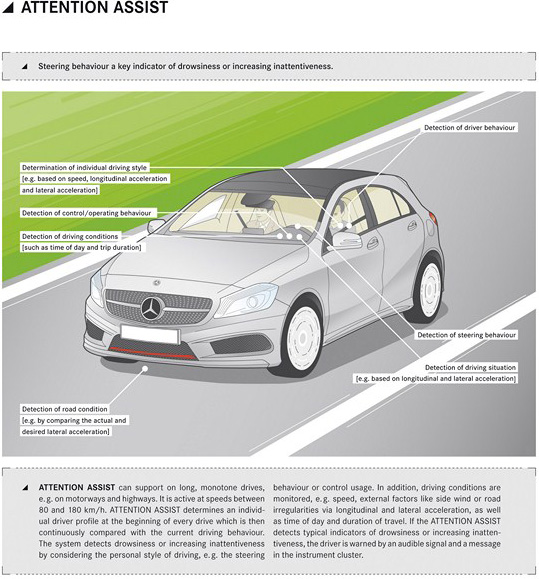
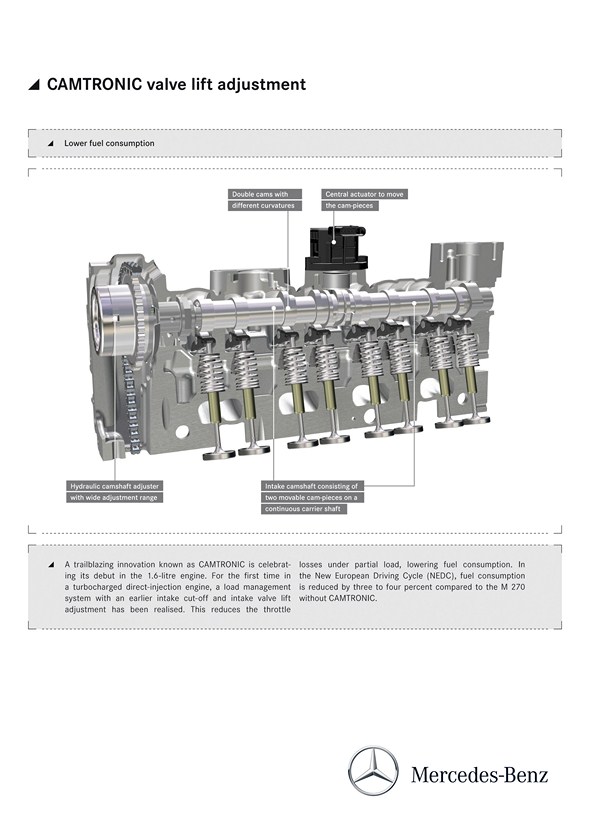
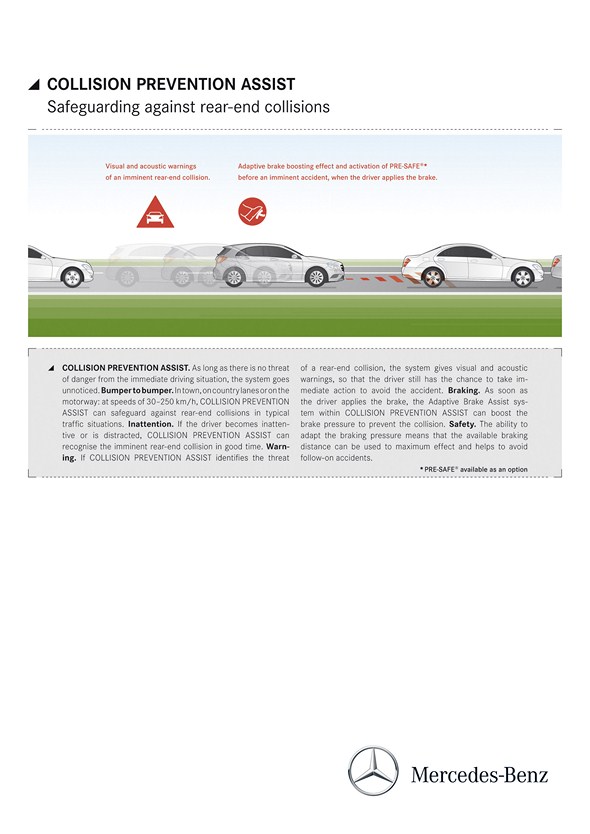
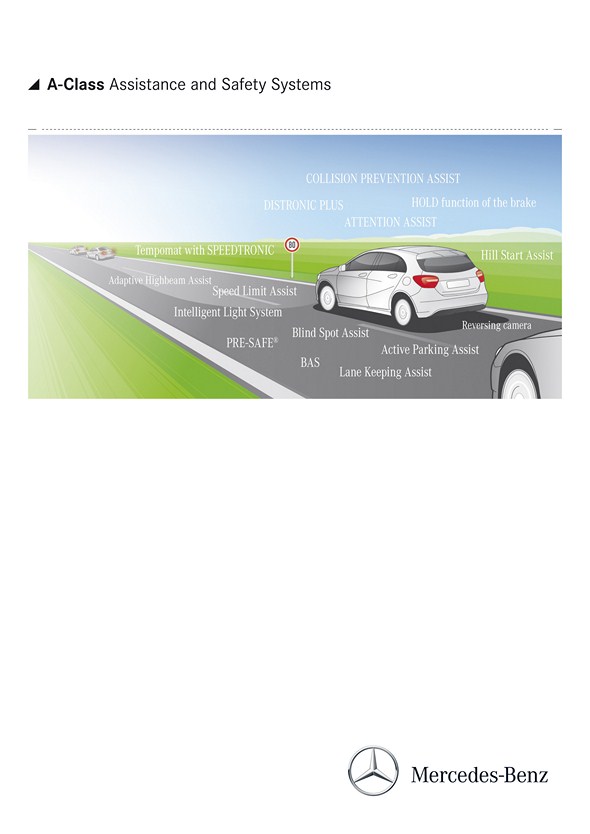
The driving assistance systems
Radar-based collision warning system as standard
The A-Class provides its drivers with comprehensive support and
protection by means of numerous driving assistance systems, from drowsiness detection with ATTENTION ASSIST to proximity control with DISTRONIC PLUS. These assistance systems, which until now were
reserved for higher vehicle segments, are based on state-of-the-art radar, camera and sensor technology and are designed to address the common causes of accidents, such as inadequate distance, fatigue and darkness.
In an innovative move in the compact segment, the A-Class is equipped as standard with a radar-based collision warning system with adaptive Brake
Assist, a combination which lowers the risk of rear-end collisions. The
COLLISION PREVENTION ASSIST system gives a visual and audible warning
to alert a possibly distracted driver to identified obstacles, and prepares Brake Assist for the most precise braking response possible. This is initiated as soon as the driver operates the brake pedal decisively.
Unlike other assistance systems in compact-class vehicles already in the market, COLLISION PREVENTION ASSIST is not intended exclusively to minimise minor accident damage in an urban driving context. Instead, this innovative solution aims to provide protection against typical rear-end collisions in hazardous driving situations at speeds above 30 km/h. Field tests carried out by Mercedes-Benz in Europe, the US, Japan and South Africa over a total distance of more than 4.5 million kilometres since 2005 confirm that the most critical rear-end collision scenarios arise at speeds above 30 km/h.
Mercedes-Benz expects that COLLISION PREVENTION ASSIST will have a significantly positive effect on real-world accidents comparable to that seen following the introduction of ESP® as standard. Test results reinforce this view: tests involving 110 car drivers in the dynamic simulator saw the accident rate fall from 44 to 11 percent in three typical situations thanks to the combination of collision warning and adaptive braking assistance.
The radar-based COLLISION PREVENTION ASSIST system with adaptive Brake Assist
- can recognise an inadequate distance from a vehicle ahead in the speed range between 30 and 250 km/h and warn the driver;
- can recognise when the gap is decreasing. In case of a detected
imminent danger of collision, the driver is provided with a visual
and audible warning; - can recognise stationary objects ahead of the vehicle at a speed of up to 70 km/h and issue corresponding warnings;
- can adapt the activation threshold for the warning and adaptive Brake Assist to given driving situations, e.g. bumper-to-bumper traffic;
- calculates the precise braking force ideally needed to avoid an accident when danger of collision is detected and makes best possible use of any distance remaining. This means that the driver behind also has a better chance of avoiding a rear-end collision.
The brake pressure is adjusted if the situation changes – if the vehicle ahead accelerates, it is decreased to the level the driver requires; if the distance to moving and stopping vehicles decreases, the brake pressure is increased
further. When the vehicle is equipped with PRE-SAFE®, COLLISION
PREVENTION ASSIST provides one of the activation parameters for the
anticipatory safety systems, such as the belt tensioners.
Electronic helpers: all the other assistance systems at a glance
Active Parking Assist, which is available as an option for the A-Class, has been developed on the basis of the PARKTRONIC system familiar from other model series. Ten ultrasonic sensors mounted in the front and rear bumpers measure the length of potential parking spaces at the left and right sides of the road. Once a suitable space has been identified, the driver stops the vehicle, selects reverse gear and activates the automatic parking assistance system via the controls on the multifunction steering wheel. The system calculates a suitable manoeuvring pattern with a maximum of five moves to complete the parking operation. The driver is assisted by the automatic actuation of the electromechanical steering during the parking process but still has to operate the accelerator and brake. The speed is limited to 10 km/h during the parking process. Parking in spaces situated along slightly curved roads is also supported.
Automatic steering to exit the parking space is a new subfunction. If the vehicle has been parked using Active Parking Assist, the vehicle can be steered out of the parking space in the direction corresponding to the activated direction indicator. Here, too, the driver has to operate the accelerator and brake. As soon as the vehicle has assumed a sufficient angle to exit the parking space in one straight move, the wheels are set to the straight ahead position, the process ends and the driver assumes steering control again. The process is completed at the latest when the vehicle is at an angle of 45 degrees relative to the starting position.
The democratisation of safety comprises a series of additional assistance
systems:
- Adaptive Highbeam Assist: when vehicles are detected ahead of or oncoming to the vehicle, this system automatically dips the beams
and adjusts the range of the headlamps appropriate to the distance.
The driver benefits from a longer dipped beam range and does not
generally need to switch manually between main and dipped beam. - Blind Spot Assist: employs two additional radar sensors at the rear
of the vehicle to warn the driver before a lane-change if a vehicle has been detected in the exterior mirror’s blind spot. - Lane Keeping Assist: a camera behind the windscreen recognises clear carriageway markings and can give a warning if the car is about to leave its lane unintentionally.
- ATTENTION ASSIST (standard): provides a warning when typical signs of drowsiness are detected. The system’s highly sensitive sensors observe the driver’s behaviour and can recognise – especially on the basis of how the steering wheel is being moved – if the driver is
becoming drowsy or inattentive. - Speed Limit Assist: a camera fitted behind the windscreen detects speed limit signs at the roadside and compares this data to information contained in the GPS system or the digital map. The relevant speed
limit is then displayed in the instrument cluster. - Brake hold function: when stopping, for example at traffic lights, the driver merely has to press the brake pedal slightly more firmly. They can then take their foot off the brake pedal and the brake will remain engaged until they move off again. The brake is released automatically when the driver steps on the accelerator.
- Hill-Start Assist: this function is able to prevent the vehicle from
rolling back unintentionally when moving off on an uphill slope. - Reversing camera: integrated in the handle strip on the tailgate, the reversing camera features a wide-angle lens. When reverse gear is
engaged, the image from the camera is transmitted to the screen of the Audio 20 system or the COMAND system. Static and dynamic guide lines assist the driver during manoeuvring. - DISTRONIC PLUS: the radar-based adaptive cruise control supports the driver at speeds between zero and 200 km/h by maintaining the distance to the vehicles in front. In doing so it is able to apply the brakes to bring the vehicle to a complete standstill and also accelerate it again. As a result, the system is also particularly convenient in stop-and-go traffic. If the system detects that the distance is being reduced too quickly, it warns the driver with both visual and audible signals.
- Cruise control with SPEEDTRONIC: the cruise control maintains the pre-set speed. The additional SPEEDTRONIC function ensures that the stored speed is not exceeded. Both functions come as standard with the 7G-DCT dual clutch transmission and are optionally available for the models with manual transmission.
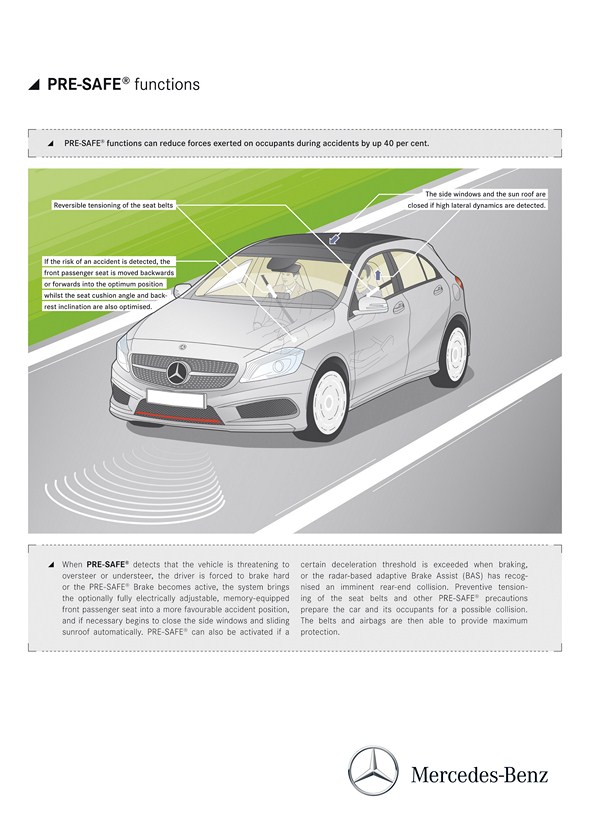
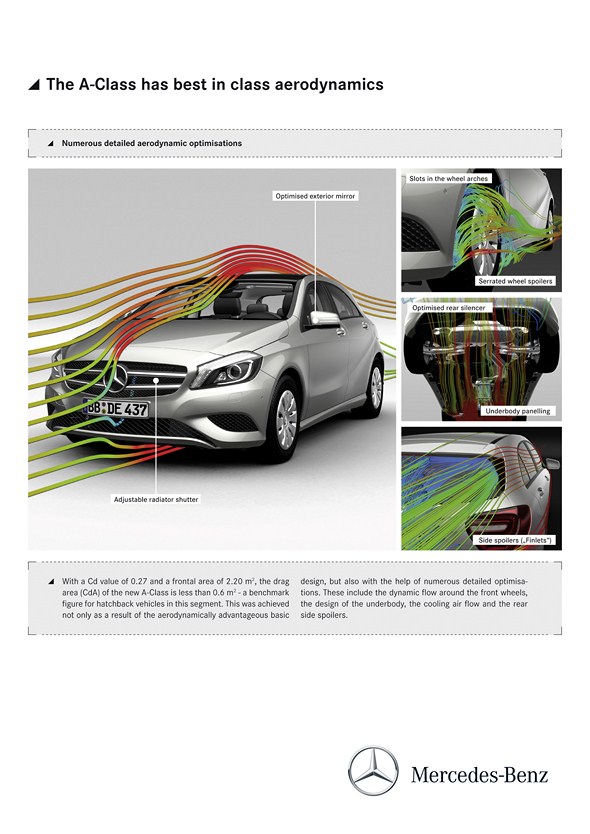
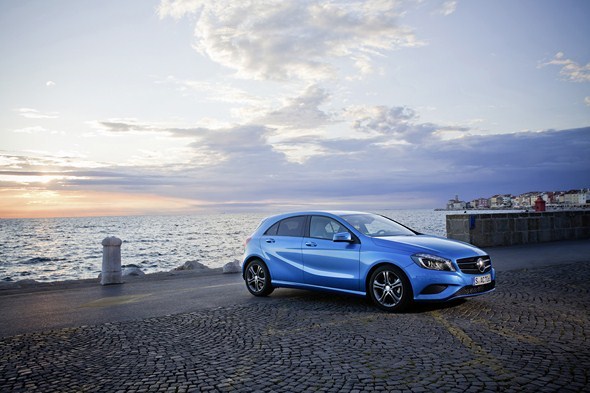
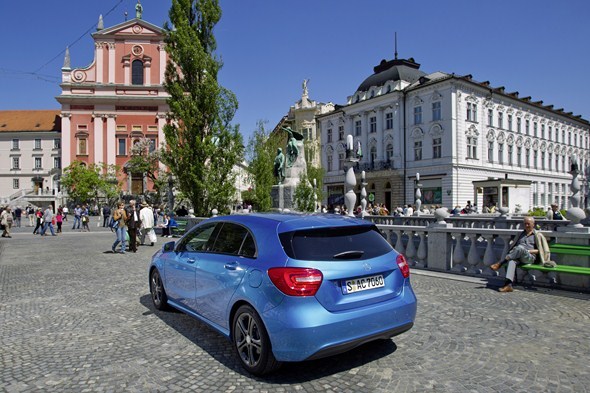
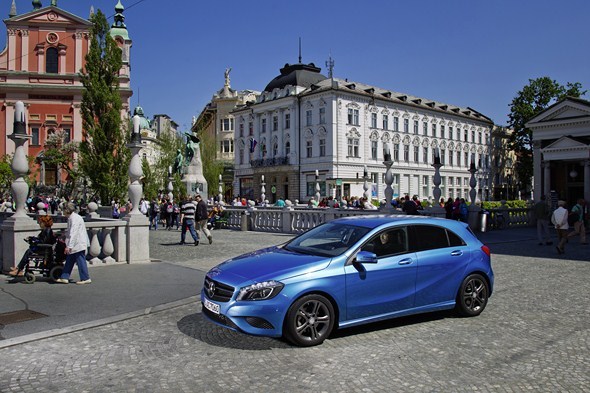
Significant reduction in accident figures thanks to driving assistance systems
Based on real-world accident profiles
Avoid accidents and reduce the consequences of accidents – this is the integrated approach adopted by Mercedes-Benz Accident Research under the heading “Real Life Safety”. Mercedes-Benz is pursuing this strategy systematically with the new, radar-based COLLISION PREVENTION
ASSIST system which is standard in all models in the new compact class. The company hopes that this will have a similarly positive effect on the incidence of accidents and their severity as other innovative safety
features from the brand, such as ESP®, BAS or DISTRONIC.
Unlike other systems in compact-class vehicles already on the market,
COLLISION PREVENTION ASSIST is not intended exclusively to minimise
minor accident damage in an urban driving context. Instead, this solution aims to provide protection against typical rear-end collisions in hazardous driving situations at speeds above 30 km/h.
Field tests carried out by Mercedes-Benz in Europe, the US, Japan and South Africa over a total distance of more than 4.5 million kilometres since 2005 confirm that the most critical rear-end collision scenarios arise at speeds above 30 km/h. The speed profile of the tests conducted by Mercedes-Benz closely follows the real-world accident data from GIDAS (German In-Depth Accident Study), the largest project to record accident data in Germany.
Mercedes-Benz expects that COLLISION PREVENTION ASSIST will have a
significantly positive effect on real-world accidents comparable to that seen following the introduction of ESP® as standard. Test results reinforce this view: tests involving 110 car drivers in the dynamic simulator saw the accident rate fall from 44 to 11 percent in three typical situations thanks to the combination of collision warning and adaptive braking assistance.
Accident statistics confirm the potential of driving assistance systems
Driving assistance systems make an important contribution to road safety. This is the result of analyses conducted by Mercedes-Benz Accident Research and investigations carried out by the insurance industry as well as independent bodies. A number of success stories can already be reported:
- ESP®: following the introduction of ESP® as standard by Mercedes-Benz,
the number of driver-related accidents involving the brand’s vehicles
in Germany fell by 42% (source: evaluation by Mercedes-Benz of the
anonymised accident statistics of the Federal Statistical Office). Over 40%
of all road traffic fatalities and 20% of those injured on the roads are victims of driver-related accidents. - Brake Assist (BAS): the accident rate for rear-end collisions involving
Mercedes passenger cars fell by 8% following the introduction of BAS
as standard (source: evaluation by Mercedes-Benz of the anonymised
50% random sample of the 1998-2003 accident statistics of the Federal
Statistical Office). - Mercedes-Benz passenger cars equipped with DISTRONIC PLUS are
involved in 7% fewer accidents and the material damage they suffer in
accidents is 14% lower (source: IIHS Insurance Institute for Highway Safety). - DISTRONIC PLUS and BAS PLUS are capable of reducing the incidence of rear-end collisions by at least 20% and they can reduce the accident severity in 25% of rear-end collisions according to a statistically significant forecast. These figures are based on a study in which the effectiveness of the systems was assessed by retrospectively simulating real-world accident data with known driver behaviours (source: GIDAS German In-Depth Accident Study). Both systems are available for many Mercedes-Benz model series.
- The combination of DISTRONIC PLUS, BAS PLUS and PRE-SAFE® Brake, which is also available for various Mercedes-Benz model series, is
accompanied by a significant reduction in frontal collisions. This was shown by an analysis of replacement part orders for the Mercedes-Benz S-Class in the years 2005 to 2008. The analysis identified the difference in order levels for replacement parts for the front section of vehicles with and without
DISTRONIC PLUS.
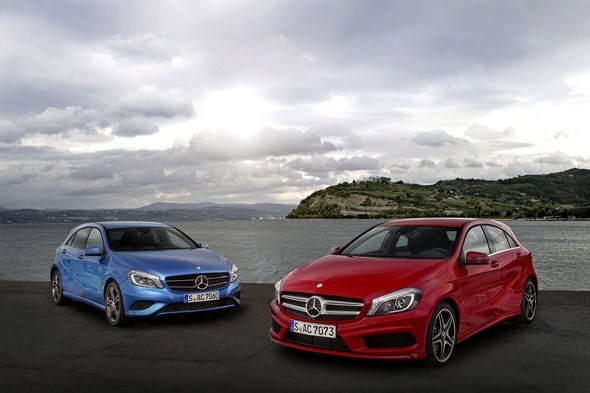
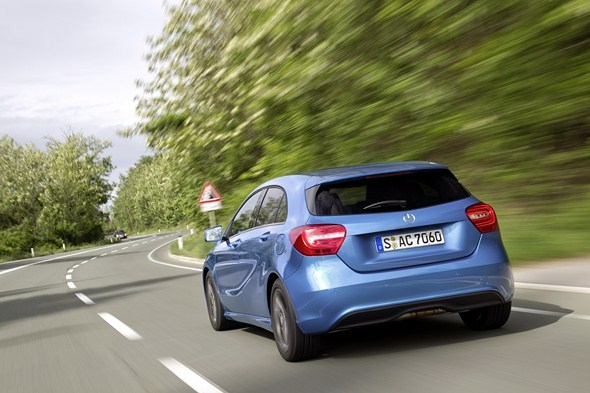
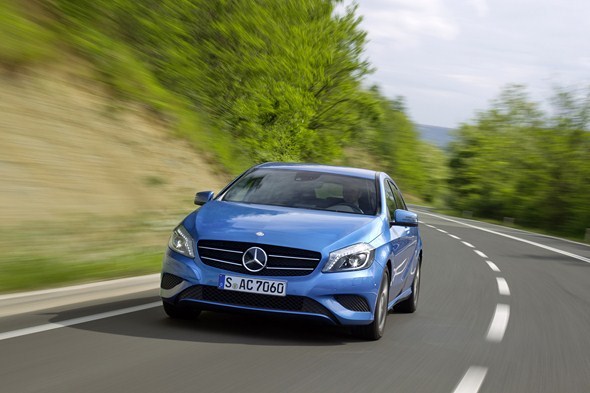
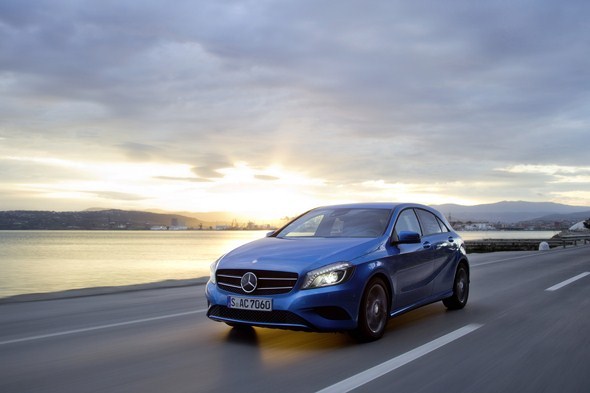
Interview with Dr Jörg Breuer, Head of Passenger Car Development,
Active Safety
“A positive effect comparable to that of ESP®“
Dr. Jörg Breuer (46) studied mechanical engineering at the Technische
Universität Darmstadt and the ETH Zürich, receiving his PhD in 1995 for his thesis “Ergonomic assessment and design of safety in the motor vehicle control system”. Breuer, who comes from Aachen, has worked for Daimler AG since July 1996 and has been in charge of the company’s Active Safety department since 2001. He is also a member of numerous auto industry safety committees, such as the “ACEA Task Force Active Safety” and the e-Safety “Implementation Roadmap” working group.
Other manufacturers already have brake assistance systems for urban driving. How does the Mercedes-Benz radar-based collision warning system differ from these?
Breuer: COLLISION PREVENTION ASSIST is not a system to minimise minor damage in an urban driving context. Instead, this assistance system aims to provide protection against typical rear-end collisions at speeds above 30 km/h.
You mean that’s the relevant speed range – the hazardous situations that can lead to rear-end collisions usually occur above 30 km/h?
Breuer: Yes, that’s shown by our field tests, in which we’ve covered over
4.5 million kilometres in Europe, the US, Japan and South Africa since 2005. And this speed profile is also confirmed by the real-world accident data from GIDAS, the largest project to record accident data in Germany.
The new compact class vehicles from Mercedes-Benz are equipped with
COLLISION PREVENTION ASSIST as standard. What effect are you hoping this will have on accident figures and accident severity?
Breuer: We expect COLLISION PREVENTION ASSIST to have a positive effect on real-world accidents similar to that seen following the introduction of ESP® as standard. This is backed up by initial test results. Tests involving 110 car drivers in the dynamic simulator saw the accident rate fall from 44 to
11 percent in three typical situations thanks to the combination of collision warning and adaptive braking assistance.
COLLISION PREVENTION ASSIST gives a warning and adjusts the braking force as required, but unlike the optional DISTRONIC PLUS it does not initiate braking autonomously. Is that a disadvantage?
Breuer: Our tests show that, with DISTRONIC PLUS, almost all drivers react
to the collision warning and initiate braking themselves. The advantage of
DISTRONIC PLUS is the comfort and convenience it provides by automatically adjusting the speed and therefore also the distance to the vehicle ahead.
COLLISION PREVENTION ASSIST is only one of many driving assistance systems available for the A-Class. What are the other highlights?
Breuer: In all, ten driving assistance systems are available. Reserved until
now for higher vehicle categories, they include systems such as ATTENTION ASSIST, which detects drowsy driving, and the PRE-SAFE® anticipatory
occupant protection system. This can really be described as the
democratisation of safety.
Democratisation of safety means that safety innovations from higher vehicle
segments find their way into the medium and compact class. Does it also mean that the A-Class has passed the brand’s own rigorous crash tests despite its
compact exterior dimensions?
Breuer: Yes, “One star is all you need” is our safety philosophy and it goes without saying that it also applies to the A-Class. My colleagues in the Passive Safety department have done a great job here and achieved their objective: the A-Class has passed the brand’s rigorous test programme. This includes not only some 30 different impact configurations, which are laid down as requirements for safety ratings and international type approval, but also nine proprietary crash tests, such as the roof-drop test or the pole impact test, developed by the brand itself.
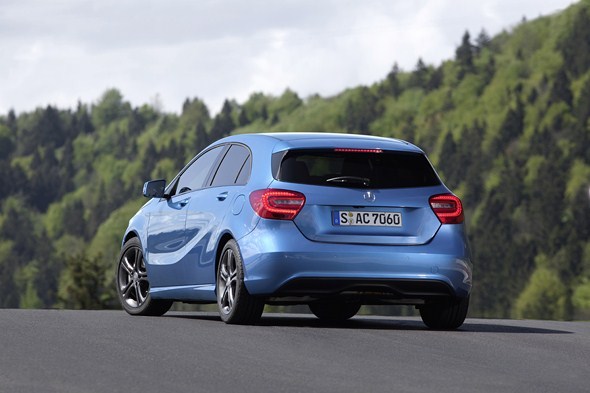
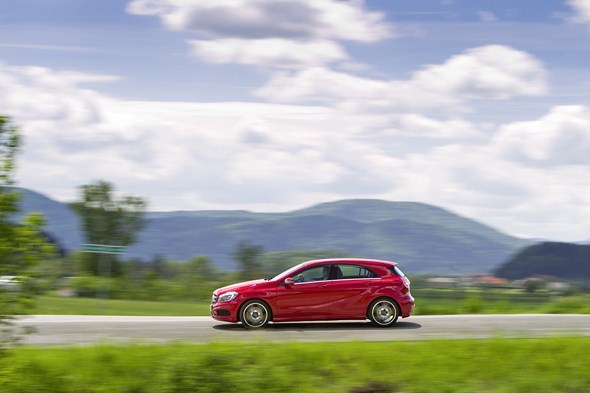
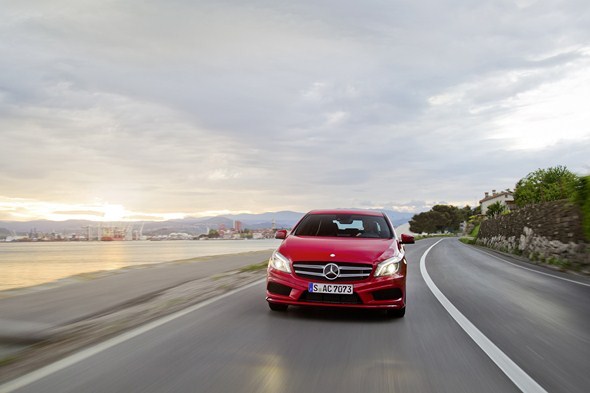
Passive safety
A strong basis and intelligent protection
“One star is all you need” – the Mercedes-Benz safety philosophy also
applies to the new A-Class. Its safety equipment, some features of which
are traditionally found in much higher vehicle categories, includes belt
tensioners and belt force limiters for the rear seats, too, the PRE-SAFE®
anticipatory occupant protection system and the active bonnet for
pedestrian protection. The line-up also includes seven airbags as standard and the Mercedes automatic emergency call system.
The new A-Class has passed the brand’s rigorous programme of crash tests. This includes not only some 30 different impact configurations, which are laid down as requirements for safety ratings and international type approval, but also nine proprietary crash tests, such as the roof-drop test or the pole impact test, developed by the brand itself.
The ability of the new A-Class to satisfy requirements which go far beyond the statutory conditions in some cases is also demonstrated by an internal offset front collision test against a future luxury-segment saloon from Mercedes-Benz: despite the high impact speed and the fact that it is the smaller accident
participant, the A-Class offers its occupants an intact passenger compartment and excellent chances of survival.
The bodyshell structure provides the basis for the high standard of passive safety, both in terms of material – the proportion of high-strength and ultra-high-strength sheet steel stands at 67 percent – and with regard to its
structural design. Key features of the front-end structure are the systematic implementation of an available crash length of 435 millimetres, load
distribution over several planes, the new bulkhead and floor concept and
the subframe as a deformation element.
A total of three longitudinal member planes – consisting of the straight front longitudinal members, a second, upper plane attached to the front end
consisting of extruded aluminium box sections and a third plane at the bottom in front of the subframe – allow impact energy to be reduced in a controlled manner.
The subframe provides the torque support for the transverse engine /
transmission block and serves to attach the components for the front axle and steering. It consists of several steel plates, some in ultra-high-strength steel, and a hydroformed tube. In order to optimise its deformation properties, the subframe is connected via two aluminium struts leading forward to the
aluminium radiator mount located under the front end. In the event of a frontal impact, forces can be discharged at an early juncture into the subframe via this third load path, in order to ensure the best possible energy dissipation.
A plastic crash wedge which is fitted at the rear of the front wheel arches helps to ensure that the wheels do not slide under the front doors in the event of a high-impact crash, irrespective of the turning angles. This means that it will be possible to open the doors, even after a serious accident.
The bulkhead also incorporates a special feature: so-called “skate runners” in front of the two middle longitudinal members discharge forces into the floor. The continuous floor structure consists of a total of four straight longitudinal members. The tunnel roof reinforcements at front and rear combine with the tunnel to provide a further closed profile supporting the front end.
Controlled deformation: protection in side-on crashes
Rigid side structures and defined deformation management help to safeguard the survival space for occupants in the event of a side impact. Elements here include the so-called “pole support”, a member fitted diagonally in the rear footwell between centre tunnel and floor side wall which is intended to prevent the floor from being torn open in the event of side impact with a tree.
High-strength steels are used in the upper area of the B-pillar in order to
minimise intrusion and to preserve the passenger cell in case of side impact. The lower area of the B-pillar is softer, in the interests of energy dissipation. The safety experts at Mercedes-Benz have christened the crack management system on the insides of the B-pillar “vampire teeth”. In a serious side-on crash, the seat belt retractor presses against the inner wall of the B-pillar. To prevent this from leading to a transverse crack which might affect structural integrity, small, tooth-like recesses define the crack direction.
Pedestrian protection: comprehensive measures including Active Bonnet
The protection of those road users who are most at risk has always been a top priority during the development of Mercedes passenger cars. The new A-Class features numerous protective measures designed to help lessen the risk of injury to pedestrians. In order to reduce the loads which arise in the event of a pedestrian impact on the bonnet of the vehicle, the deformation space between the bonnet and the components beneath it has been optimised. This is achieved in part through the appropriate positioning of components such as control units or fluid reservoirs in the engine compartment.
In the case of the A-Class, with its sporty, low-slung body, an active bonnet is also used. In the event of a pedestrian impact, sophisticated sensors combined with intelligent algorithms trigger actuators in the area of the bonnet hinges. These raise the bonnet by 65 millimetres. The additional space which this creates between the bonnet and the components in the engine compartment means that a head is subject to comparatively low internal acceleration forces on impact.
The deformation characteristics of the bonnet have been developed specifically to meet these requirements. Reductions in the impact loads can be achieved by using aluminium and reinforcing the inside face of the bonnet.
On all seats: intelligent restraint systems
The A-Class protects its passengers with up to nine airbags. The standard
complement comprises driver and front-passenger airbag, a kneebag for the driver, large thorax-pelvisbags incorporated in the seat to protect the chest, stomach and pelvis area and windowbags. The windowbags extend over both rows of seats to the A-pillar triangle. They serve to protect the occupants’ heads from hard contact in the event of side impact and can also help to keep limbs inside the vehicle in an accident. The driver and front passenger airbags
operate in two stages, according to the expected severity of the impact. The gas generator first of all fills the driver’s airbag with 60 and the front passenger’s airbag with 70 per cent gas. If a more severe impact is forecast, the second stage of the gas generator will additionally be activated after a delay and the airbags will be filled at a higher pressure level. Sidebags for the rear are
optionally available.
The high safety expertise of the A-Class’s developers is reflected in a host of details. The deformable steering column yields by up to 100 millimetres when the driver exerts pressure on the airbag as a result of forward displacement in an accident, for example. The comfort features also reveal a fine touch: the driver’s airbag is connected to a vibration absorber in the steering wheel to reduce vibrations, for example.
The head restraints for driver and front passenger are new developments. The onus in developing the new restraints was on further reducing the risk of whiplash injury. Key to effective whiplash prevention is the best possible
adjustment of the distance from the rear of the occupants’ heads. The restraint incorporates a button for this purpose on the left-hand side (as seen in the
direction of travel). This release mechanism can be pressed to unlock the head restraint and increase the distance between head and head restraint. The
button does not need to be pressed in order to reduce the distance. This
enables single-handed operation in all adjustment positions.
Family-friendly: comprehensive precautionary measures in the rear
In developing the new A-Class, the Mercedes-Benz safety experts have also attached great importance to the safety of the rear-seat occupants. The new model therefore meets the relevant requirements of the Japanese and Chinese NCAP institutes which also take account of factors such as the ease of use of the rear seat belts. Experts believe that Euro NCAP will extend its rating
programme to include rear-seat safety in the medium term. The A-Class is
already prepared for this and is a role model in this respect – both within
and beyond its own vehicle category – with features such as standard-fit belt tensioners and belt force limiters for the outer rear seats. A torsion bar in the roller mechanism twists when the load on it exceeds a defined level. In this way the belt force is limited and with it the load on the seat occupant.
The A-Class’s family-friendly features also include the ISOFIX child seat
securing system on the outer seats. Child seats can additionally be fixed
to the vehicle by means of special anchorage points with top tethers.
Innovation in the compact class: anticipatory occupant protection system
The PRE-SAFE® anticipatory occupant protection system is available in the
A-Class for the first time. This represents a further step in the on-going
democratisation of this innovation, which was premiered in the S-Class
in 2002.
PRE-SAFE® from Mercedes-Benz uses the time between detection of a potential accident situation and a possible collision to initiate preventive protection measures, thus reducing the loads exerted on the occupants in the event of a crash by up to 40 percent.
Core features of PRE-SAFE® are reversible belt tensioning, the closing of side windows and sliding sunroof when critical lateral dynamics are detected and adjustment of the fully electric front passenger seat with memory function to an ideal position for maximum effectiveness of the restraint systems.
PRE-SAFE® is activated when one of the following parameters is met:
emergency braking, panic braking, pronounced over- or understeering,
critical steering movements or heavy support by adaptive Brake Assist.
Mercedes-Benz automatic emergency call system: faster assistance at the scene of an accident
In combination with COMAND Online, the new A-Class is equipped with the Mercedes-Benz emergency call system. As long as COMAND Online is connected to a mobile phone, the Mercedes-Benz emergency call system can automatically alert the emergency services within a matter of minutes in the event of a serious accident.
After the airbags or belt tensioners are triggered, the vehicle’s exact GPS position and vehicle identification number (VIN) are sent by SMS to a special emergency centre, with positional data also being transmitted using the DTMF method (dual-tone multi-frequency) at the same time. Even if the occupants are unconscious or unsure of exactly where they are because they are on a holiday trip, for example, the emergency services alerted by the emergency centre will be notified quickly with accurate information. The driver can also make the emergency call manually as “MB emergency call” is always the first entry in the system phone directory.
On receiving the call, the emergency centre establishes voice contact with the vehicle occupants in a matter of seconds. A particularly practical aspect in an emergency is that the communication is held not in the language of the country where the accident has occurred but in the language which the driver has preset in COMAND Online.
Other than any mobile phone communication charges, which would only arise in the event of an actual emergency call, no charges are incurred by the driver for the emergency call facility and no contractual relationship – other than the regular mobile phone contract – is required.
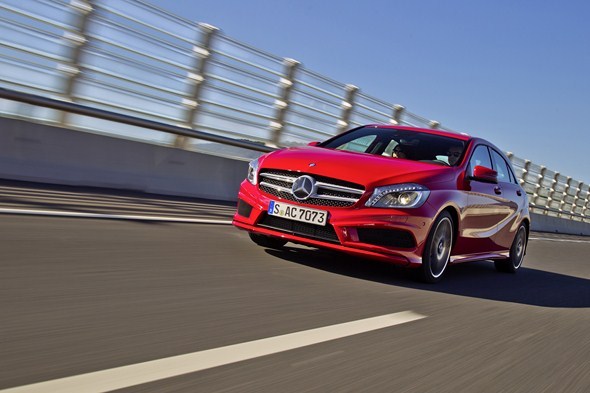
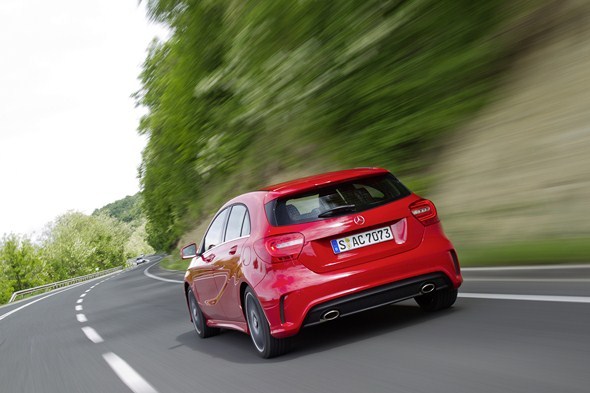
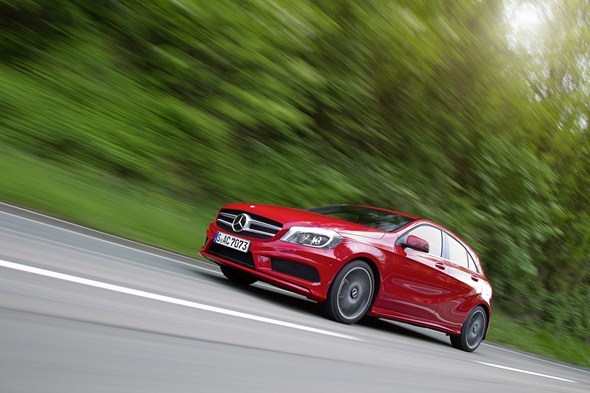
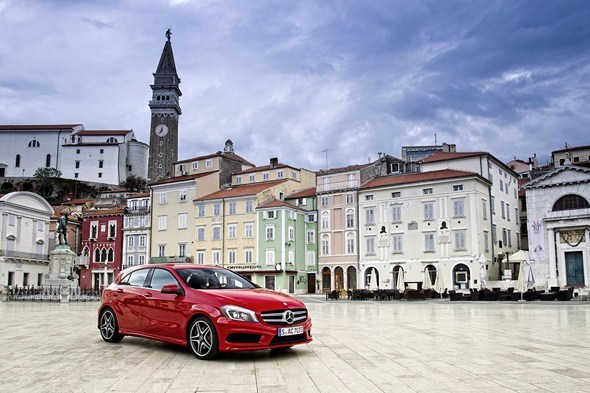
The diesel engines
Economy right across the board
Downsizing for the entry-level engines and downspeeding for the more powerful units – that is the Mercedes-Benz strategy for the diesel
engines in the new A-Class. The wide range meets every performance
requirement, and demonstrates the potential residing in the diesel
engine: for the first time – with the A 180 CDI – a Mercedes-Benz will emit just 98 g of CO2 per kilometre. As a further highlight, the A 220 CDI
already meets the Euro 6 emission standard only coming into effect
from 2015.
The diesel engines also boast extreme efficiency and environmental
friendliness, thanks to state-of-the-art injection technology and turbocharging. The A 180 CDI kicks off at 80 kW (109 hp) and offers maximum torque of up to 250 Nm (dual clutch transmission) or 260 Nm (6-speed manual transmission). In the A 200 CDI the maximum power output stands at 100 kW (136 hp),
accompanied by maximum torque of 300 Nm. The A 220 CDI (available from 12/2012) has a displacement of 2.2 litres and generates 125 kW (170 hp) with 350 Nm of torque, giving the performance of the A-Class a decidedly sporty touch.
From the S-Class to the A-Class: the diesel engines of the OM 651 series
Since its world premiere in 2008 the direct-injection diesel engine known as the OM 651 has been setting standards in terms of performance and torque characteristics, economy, emissions and smooth running. It is in more
widespread use than any other Mercedes-Benz diesel engine and serves
as a model of efficiency and power right up to the S-Class. For transverse
installation the belt drive for the ancillary units, the installed position of the turbocharger and the air ducting have been modified.
No less than three versions are used in the new A-Class:
- Dynamic to drive, extremely efficient and outstandingly clean, the
A 220 CDI is only available in combination with the 7G-DCT dual clutch
transmission. The 125 kW (170 hp) top diesel is equipped with a weight-optimised crankshaft with individual bearing covers bolted from below and four counterweights, enabling it to tip the scales at around six kilograms less than a longitudinally installed OM 651 of the same displacement. The single-stage turbocharger has larger dimensions than that in the 80 and
100 kW variants. The A 200 CDI has multiple exhaust gas recirculation (see next section) to reduce nitrogen oxide emissions. It already meets the Euro 6 emission standard coming into force from 2015. With 112 g of CO2 per kilometre (provisional figure) the A 220 CDI sets new standards in its segment. With a displacement of 2.2 litres the engine is comparatively large, and therefore already agile at low rpm. “Downspeeding” is the term used by the engine specialists at Mercedes-Benz to describe this combination of a large displacement and low engine speeds. As a result it has been possible
to make the ECONOMY mode of the 7G‑DCT transmission decidedly
economical and comfortable. If the driver selects “S”, gearshifts are
performed much faster and the ratio spread uses the rpm reserves of the
engine for dynamic performance. The performance of the A 220 CDI – which is available in BlueEFFICIENCY and Sport versions – is at sports car level with 7.8 seconds from zero to 100 km/h and a top speed of 227 km/h. - The 1.8-litre engine variant is used in the A 180 CDI with the 7G-DCT dual clutch transmission and the A 200 CDI. The displacement was reduced by shortening the stroke (83 mm instead of 99 mm). The significantly longer connecting rods ensure lower transverse friction, and the two Lanchester balancer shafts are also of low-friction design. The single-stage turbocharger was optimised for efficiency and features adjustable vanes. With a distance between cylinders of 94 millimetres and cylindrical gears driving the
camshafts, transverse installation and the necessary length restriction
were part of the design specification from the very start.
To realise the start/stop function, the belt drive is decoupled from the
crankshaft in all three engines.
Other common features include:
- common rail technology with a rail pressure increased to 1800 bar. The maximum ignition pressure of 180 bar also contributes to the high power output and a muscular torque curve
- the oil injection nozzles and the water pump are activated only when required, in order to save energy and fuel. The controlled oil pump
additionally reduces oil flow and thus fuel consumption - the engine block is made of cast iron, the cylinder head of aluminium
- a two-piece water jacket in the cylinder head provides for optimum cooling in the area of the combustion chamber plate. This enables an ignition pressure of 200 bar and a high specific power output
- the cast iron barrels have undergone considerably finer honing than on the predecessor, also contributing to the reduction in fuel consumption
- to compensate for the second-order forces which are inherent to four-cylinder in-line engines there are two Lanchester balancer shafts at the bottom of the engine block running in low-friction roller bearings
rather than conventional plain bearings - the two-mass flywheel has been specifically designed for high engine torque at low engine speeds in order to isolate the crankshaft’s
vibration stimuli, thereby contributing to the engine’s excellent smoothness
Replete with Mercedes-Benz know-how: the OM 607
For the A 180 CDI with manual transmission Mercedes-Benz has had
recourse to its cooperation with Renault to achieve fuel economy advantages from a compact, lightweight, low-friction engine which has been rigorously downsized. The common-rail four-cylinder with a rail pressure of 1600 bar is currently in its sixth generation, with more than 1.3 million units produced each year. This 1.5-litre engine with low-pressure EGR generates 80 kW
(109 hp). With 98 g of CO2 per kilometre, it is among the most environmentally friendly diesels in the compact car segment. The turbocharger features variable turbine geometry (VTG).
This engine with the in-house designation OM 607 weighs around
30 kilograms less than an OM 651. Numerous components are specific to
Mercedes-Benz, for example the OM 607 has the engine mountings of the
M 270 petrol engine, as well as a special two-mass flywheel. The starter flanged onto the transmission, the alternator and the refrigerant compressor also come from the Mercedes modular system, and are driven by a belt with
six grooves.
Like all Mercedes engines, the OM 607 was required to absolve the extensive engine test programme involving bench-testing and endurance runs. The
application effort devoted to the OM 607 by Mercedes-Benz was very
considerable. In a joint project team of Mercedes and Renault personnel the engine was especially improved with respect to NVH and driveability.
Coordination work also went into the ECO start/stop function included as standard. This Mercedes-specific feature also operates at temperatures down
to minus 10 degrees Celsius, for example, and can therefore make a more
frequent contribution to fuel economy.
Overview of technical data for the A-Class with diesel engine
| Model | A 180 CDI* | A 180 CDI ** | A 200 CDI*** | A 220 CDI** | |
| Cylinder arrangement/number | 4/in-line | 4/in-line | 4/in-line | 4/in-line | |
| Displacement | [cc] | 1461 | 1796 | 1796 | 2143 |
| Rated output | [kW/hp] at [rpm] | 80/109 4000 | 80/109 3200-4600 | 100/136 3600-4400 | 125/170 3600-4000 |
| Rated torque | [Nm] at [rpm] | 260 1750-2500 | 250 1400-2800 | 300 1600-3000 | 350 1600-3200 |
| Fuel consumption, combined | [l/100 km] | 3.8 | 4.1 | 4.3 (4.1) | n/a |
| CO2 emissions, combined | [g/km] | 98 | 109 | 111(109) | n/a |
* manual transmission (FWD), ** dual clutch transmission (7G-DCT), *** figures for dual clutch transmission (7G-DCT) in brackets
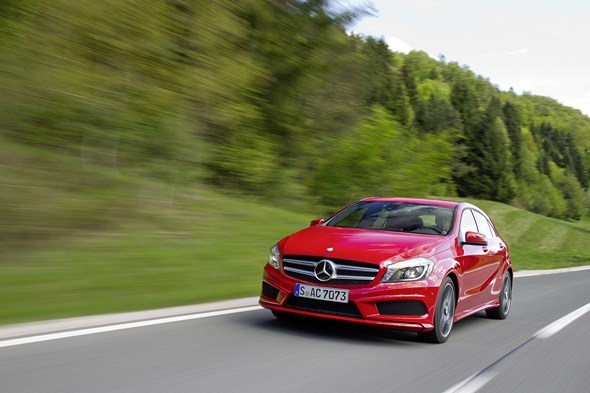
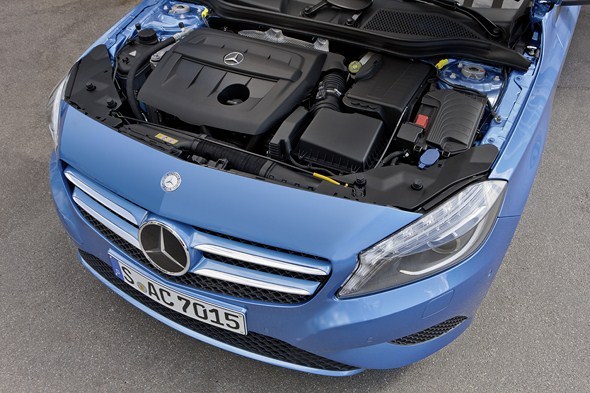
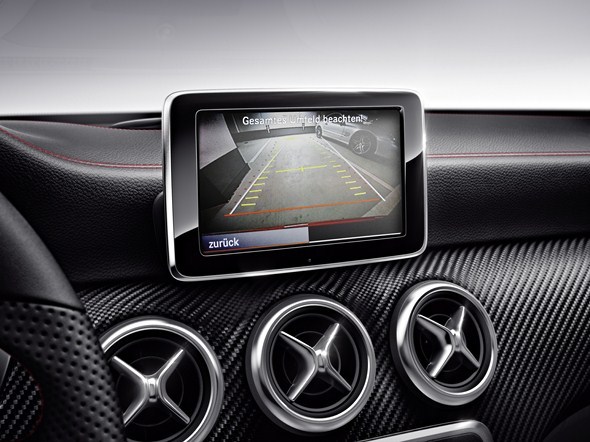
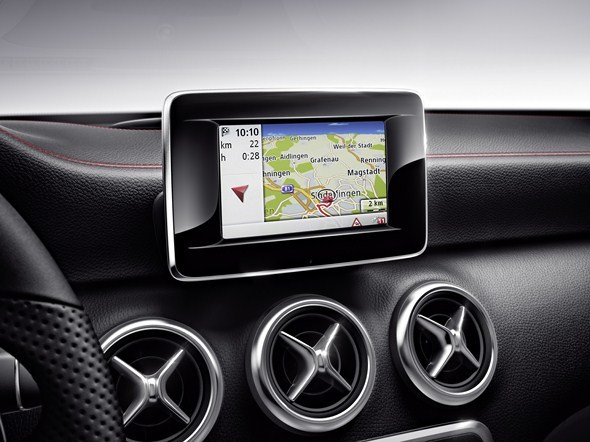
Dual exhaust gas recirculation
Even lower combustion residues
To reduce nitrogen oxide (NOx) emissions even further, the OM 651 engine
of the A 220 CDI is equipped with what is known as multiple exhaust gas
recirculation (EGR). In addition to high-pressure EGR, where hot exhaust
gases are taken from the manifold and reintroduced on the fresh air side, downstream of the intercooler, exhaust gases are diverted at a lower pressure level. This low-pressure EGR diverts the filtered exhaust gases downstream of the diesel particulate filter, cools them and uses a valve to return them to the fresh airflow upstream of the turbocharger.
NOx generation is primarily influenced by the oxygen concentration in the combustion chamber (= proportion of exhaust gases). A further increase in
EGR rates using classic high-pressure EGR has the inherent disadvantage of charging losses and further throttling to achieve the necessary scavenging gradient. This leads to disadvantages with respect to particulate emissions and fuel consumption. Low-pressure EGR solves these problems, as it does not
reduce the drive energy of the turbocharger while at the same time
considerably reducing the throttling requirement of a high-pressure EGR
system.
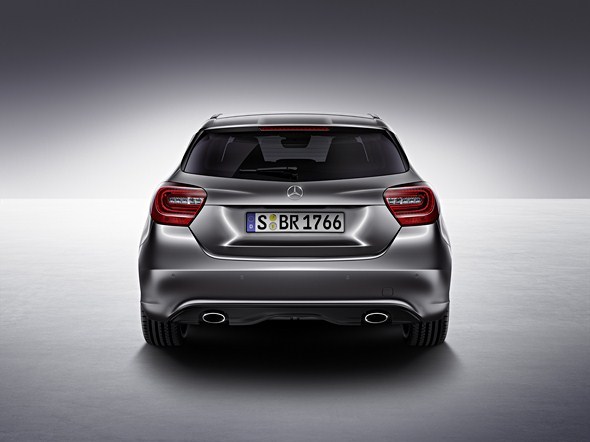
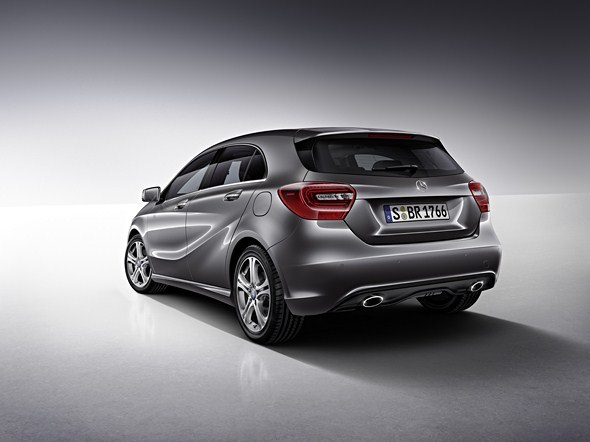
The petrol engines
Powerful, responsive and super-clean
Mercedes-Benz has systematically transferred the BlueDIRECT
technology of the V6 and V8 engines in the Mercedes-Benz luxury class. The BlueDIRECT four-cylinder petrol engines for the new A-Class combine great responsiveness and exemplary power delivery with outstanding efficiency and the best emission figures in this class. The world-first CAMTRONIC, an innovative valve lift adjustment feature, makes a major contribution to this. There is a choice of 1.6 or 2-litre variants of the new four-cylinder engine family for the A-Class, covering a power range from 90 kW (122 hp) and 200 Nm to 155 kW (211 hp) and 350 Nm.
Thanks to BlueDIRECT and highly precise piezo-injection, the new engines
are already expected to meet the Euro 6 emission standard for petrol engines coming into force from 2015. Even the much more stringent diesel particulate limit in the Euro 6 standard is already bettered with no additional exhaust
aftertreatment. This was a major motivation for introducing BlueDIRECT
into this segment as well. This means that the completely newly developed generation of four-cylinder petrol engines is ideally prepared for the future.
Extremely versatile
The basis for all three petrol engine variants in the new A-Class is the
all-aluminium M 270 engine with two chain-driven overhead camshafts and four-valve technology. This power unit is extremely versatile, and will also be gradually introduced into larger model series. In this way it also contributes to a sustained reduction in production costs. The four-cylinder can be installed transversely (M 270) or longitudinally (M 274), and combined with front, rear or 4MATIC all-wheel drive, and also with a manual, automatic torque converter or dual clutch transmission.
The BlueDIRECT family has grown: three new petrol engines
The M 270 engine is available in three power classes in the new A-Class.
As the A 180 BlueEFFICIENCY with a displacement of 1595 cc it develops
90 kW (122 hp) and a maximum torque of 200 newton metres over a wide engine speed range from 1250 to 4000 rpm. With the basic engine and the
6-speed manual or seven-speed dual clutch transmission (figures in brackets) the A-Class accelerates from zero to 100 km/h in 9.2 seconds (9.1 seconds), and has a top speed of up to 202 km/h (202 km/h). The fuel consumption and CO2 emission figures of 5.5 l/100 km (5.4 l/100 km, both NEDC combined) resp. 128 g/km (127 g/km) are so low that they possibly set a new record.
The A 200 BlueEFFICIENCY with the same displacement of 1595 cc develops 115 kW (156 hp) and a maximum torque of 250 Nm, which is likewise
available from 1250 to 4000 rpm. It sprints from zero to 100 km/h in
8.4 seconds (8.3 seconds) and has a top speed of 224 km/h (224 km/h), but is happy with an average 5.5 l/100 km of fuel (5.4 l/100 km), corresponding to CO2 emissions of 129 g/km (127 g/km).
The new, top engine variant with 1991 cc is available as the A 250
BlueEFFICIENCY or A 250 Sport. In both cases the engine develops
155 kW (211 hp) and a maximum torque of 350 Nm from 1200 to 4000 rpm.
Performance is at sports car level, with acceleration from zero to 100 km/h in 6.6 seconds and a top speed of 240 km/h. Nonetheless it has the best fuel
consumption in this class at 6.1 l/100 km, and CO2 emissions of 143 g/km
(A 250 BlueEFFICIENCY).
All engine variants are designed for customer-friendly operation with
E10 premium petrol (95 RON).
Overview of technical data for the A-Class with petrol engine
| Model | A 180* | A 200* | A 250** | |
| Cylinder arrangement/number | 4/in-line | 4/in-line | 4/in-line | |
| Displacement | [cc] | 1595 | 1595 | 1991 |
| Rated output | [kW/hp] at [rpm] | 90/122 5000 | 115/156 5000 | 155/211 5500 |
| Rated torque | [Nm] at [rpm] | 200 1250-4000 | 250 1250-4000 | 350 1200-4000 |
| Fuel consumption, combined | [l/100 km] | 5.5 (5.4) | 5.5 (5.4) | 6.1 |
| CO2 emissions, combined | [g/km] | 128 (127) | 129 (127) | 143 |
* figures for dual clutch transmission in brackets (7G-DCT), ** only available with dual clutch transmission
Engine technology from the S-Class for the A-Class
The technology package in the new four-cylinder petrol engines includes
a number of new developments which were introduced in 2010 with the
ultra-modern BlueDIRECT V6 and V8 engines for the Mercedes-Benz S-Class, and are now available in the compact class for the first time.
The combustion process is based on third-generation Mercedes-Benz direct injection with highly precise, multiple piezo injection technology. In 2006 Mercedes-Benz was the first car manufacturer to introduce direct injection with spray-guided combustion into series production.
Piezo injectors for very low particulate emissions below the Euro 6 limits
Newly developed piezo injectors allow up to five injections per power stroke.
In the warm-up phase this enables particulate emissions to be reduced by
more than 90 percent. The overall result is that all emission figures including
particulates are now already below the limits set by the Euro 6 emission
standard, which only comes into force from 2015.
Compared with conventional multi-hole solenoid valves, piezo injectors have numerous advantages in petrol engines. The fuel vaporises up to four times as fast, the jet of fuel penetrates less deeply into the combustion chamber and the injectors are able to deliver minute quantities of fuel extremely precisely. All this prevents fuel from being deposited on the combustion chamber walls,
resulting in significantly reduced particulate emissions. Moreover, multiple injections allow operating strategies for maximum fuel efficiency while
improving cold-start characteristics.
The crystalline structure of the piezo-ceramic changes in microseconds
under an electric voltage, and with a precision of just a few thousandths of a millimetre. The central component of a piezo-electric injector is the piezo-stack, which directly controls the metering needle. With a response time of just
0.1 milliseconds, the fuel injection can be very sensitively and precisely
adjusted to the current load and engine speed, with a beneficial effect on
emissions, fuel consumption and combustion noise.
Multi-spark ignition for optimal efficiency
The third-generation direct injection system also features “rapid multi-spark ignition” (MSI). Following the first spark discharge and a brief combustion period, the coil is recharged rapidly and a further spark is discharged. The MSI system enables up to four sparks to be discharged in rapid succession within one millisecond, creating a plasma with a larger spatial expansion than
conventional ignition.
The rapid multi-spark ignition can be actuated to vary both the timing of the sparks and the combustion period to suit the relevant operating point. This provides scope for the best possible centre of combustion and improved
residual gas compatibility. This in turn reduces fuel consumption.
Fuel savings of up to 4 percent are possible alone by the use of piezo-electric injection technology in combination with multi-spark ignition, depending on the driving cycle.
CAMTRONIC: up to ten percent lower fuel consumption
A trailblazing innovation known as CAMTRONIC is celebrating its debut in the 1.6-litre engine. For the first time in a turbocharged direct-injection engine, a load management system with an earlier intake cut-off and intake valve lift adjustment has been realised. This reduces throttling losses under partial load, lowering fuel consumption. In the New European Driving Cycle (NEDC), fuel consumption is reduced by three to four percent compared to the M 270
without CAMTRONIC. In day-to-day driving, which typically has a high
proportion of partial load operation, the potential saving is even greater, with fuel savings of up to ten percent in certain operating ranges. This world first was developed completely in-house by the Mercedes-Benz Technology Center in Stuttgart and the Daimler engine plant in Berlin.
No turbo-lag thanks to scavenging
Above all, Mercedes-Benz engineers were able to obtain a high output from a small displacement by the use of a turbocharger. This forces the intake air into the combustion chambers at a pressure of up to 1.9 bar, with the turbine vanes rotating at up to 230,000 rpm. The charger has been designed to deliver high torque even at low engine speeds. It is integrated into a newly developed
manifold turbocharger module, positioned in front of the engine for the best possible cooling. Separate exhaust ducting from the cylinders to the
turbocharger and the high exhaust temperature of up to 1050 degrees Celsius make optimal use of the exhaust gas energy, producing a high output and
outstanding responsiveness.
By using a combination of direct injection and variable adjustment of the
intake and exhaust camshafts, the developers were also able to exploit the
advantages of so-called scavenging: partly overlapping the opening times of the intake and exhaust valves causes some of the cold intake air to flush the hot exhaust gas from the cylinder into the exhaust manifold, which considerably improves charging compared to conventional operation.
Especially at low engine speeds, and thanks to the increased mass flow in the exhaust tract, the turbocharger also responds much more rapidly – this
completely avoids any “turbo-lag” or delay when moving off. The direct
injection system ensures that the fresh gas is not yet mixed with fuel when it enters the cylinder, as would be the case in engines with manifold injection. There are therefore no undesirable scavenging losses, i.e. unburned fuel flushed into the exhaust manifold.
Torque levels like a diesel
As a result the new 1.6-litre four-cylinder in the A-Class already delivers its maximum torque at 1250 rpm, maintaining it to 4000 rpm. The 2.0-litre even does a little better: its maximum torque of 350 Nm is already available from 1200 rpm, which means that for low-end torque it leads the field for four-cylinder engines.
In combination with the new 7G-DCT transmission, whose control unit
communicates with the engine management system, the new four-cylinder responds to the accelerator very readily. At cruising speed a higher ratio can
be chosen, which further improves fuel consumption and noise level. The
turbocharged engines also maintain their exemplary fuel consumption under high loads, as the outstanding cooling system only makes a richer mixture necessary at speeds above 200 km/h. A two-piece water jacket with optimised cross-flow cooling and fine, only three-millimetre wide cooling ducts between the spark plugs and injectors bring the coolant to the right places.
Thermal management shortens the warm-up phase
A new thermal management system has also been developed: in cold state, a switchable water pump with flow-optimised ball valve ensures that no coolant flows through the engine, providing for swift heating-up of the combustion chambers after starting up the engine. The thermostat is electronically
controlled and the coolant temperatures are adjusted according to driving style and ambient conditions. The thermostat itself is also a flow-optimised ball valve. In the interest of high efficiency, the volumetric flow of the oil pump is also controlled as in the V engines.
Controlled oil pump with two pressure stages
The variable vane-type oil pump operates with two pressure stages, depending on the characteristic map. At low engine speeds and loads the pump runs at a low pressure of two bar. At this time the oil-spray nozzles for piston cooling are switched off. The high-pressure stage is activated at the upper load and engine speed levels. Thanks to this control concept, depending on engine load and engine speed the lubrication and cooling points of the engine can be supplied with significantly lower drive energy than would be possible with an
uncontrolled pump.
New coolant ducting and 3-phase thermal management
The coolant ducting in the cylinder head is also completely new. The water mantle is of two-piece construction to improve flow. This leads to specific
increases in flow speeds and heat dissipation at certain points, accompanied by a rigorous reduction in pressure losses throughout the coolant circuit. This has made it possible to reduce the power output of the water pump despite an
increased engine output.
As it warms up, the flow of coolant is regulated by a 3-phase thermal
management system so that it rapidly reaches normal operating temperature. Initially the coolant remains at rest in the engine. It then circulates in the
engine circuit, but without the radiator. When a temperature of 105 degrees Celsius has been reached in normal operation (87 degrees Celsius under high load), the vehicle’s radiator is included in the circuit.
ECO start/stop function with direct-start
The start/stop system included as standard in all models operates with starter-supported direct-start. This means that when the engine is switched off, the attitude of the crankshaft is registered by a new crankshaft sensor so that
the engine control unit knows the positions of the individual cylinders. On restarting, it can then select the cylinder that is in the most suitable position for first ignition. After the starter has briefly turned over the engine, reliable injection, ignition and combustion is immediately possible in the ideally
positioned cylinder.
First use of Lanchester balancer shifts with antifriction bearings in a
petrol engine
The secondary inertia forces inherently occurring in a four-cylinder in-line engine are compensated by two Lanchester balancer shafts in the bottom of
the engine block. Mercedes-Benz is the first automobile manufacturer to use antifriction bearings to balance masses: imbalances are compensated by
cylinder roller bearings, with axial forces from the gearing taken up by a ball bearing. This arrangement not only improves driving comfort, but also helps to lower fuel consumption thanks to considerably less friction. In view of the more favourable connecting rod configuration, the 1.6-litre version requires
no Lanchester dynamic balancing.
Minimised friction
Particular attention was also paid to reduced friction. This was primarily achieved by a reduction in flow through the oil and water pumps, low-friction pistons, piston rings and cylinder walls, plus the new thermal management system and chain drive. The engine and transmission are mounted at four points by an engine mounting, a transmission mounting and two pendulum supports. These are specially configured for the needs of the high-torque
engine variants with a view to maximum noise comfort. The hydraulic damping integrated into the transmission mounting also contributes decisively to the excellent driving comfort.
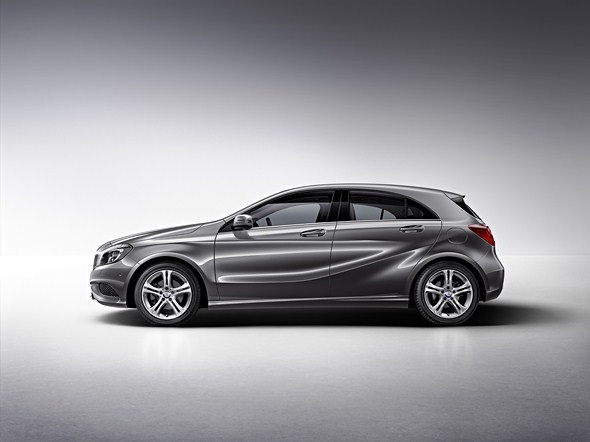
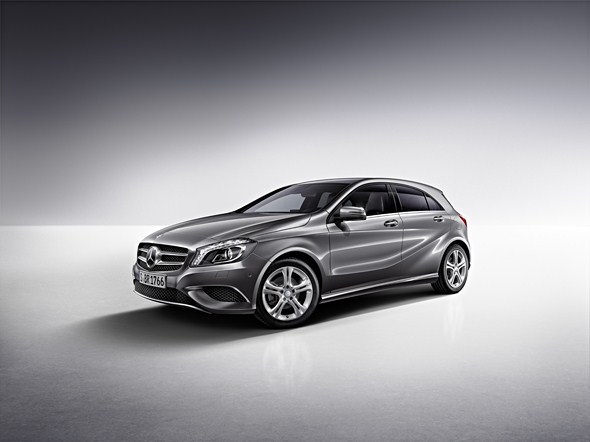
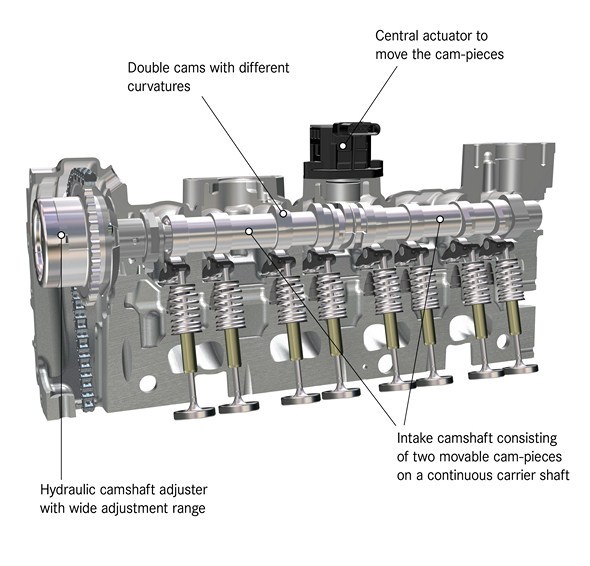
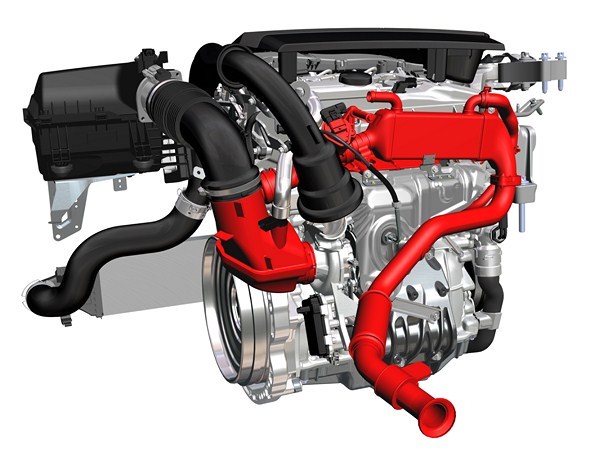
CAMTRONIC valve lift adjustment
Using the camshaft to accelerate
Mercedes-Benz is the first automobile manufacturer to equip the 1.6-litre
version of the M 270 engine with CAMTRONIC intake valve lift adjustment. The system operates mechanically, but is served by an electronically controlled actuator. The intake camshaft is made up of several components: two
hollow-drilled sub-shafts of equal size are mounted on the carrier shaft.
Mercedes-Benz engineers refer to these as “cam-pieces”, of which the first
controls the intake valves of cylinders 1 and 2, and the second those of
cylinders 3 and 4. The cams themselves are masterpieces of the caster’s art: they take the form of a double-cam with two curved surfaces. The surface
operating the valves via roller-type rocker arms is only half as wide as on a conventional cam, therefore the space requirement is the same.
When the steeper half of the cam is active, the valve lift is increased and the valves remain open for longer. Switching to the flatter half of the cam shortens the valve lift and the valves close sooner.
“Accelerating” with the camshaft
Load control with the smaller valve lift is realised using various components. At very low engine torque the load control is conventional, using the position of the throttle flap, at medium torque levels using the position of the intake camshaft and at high torque levels using the charging level of the
turbocharger.
As the torque increases the valve lift is switched to the larger level, load
control once again being conventional via the throttle flap or, in the charged operating range, via the charging level of the turbocharger. In popular terms one might also say that the new Mercedes-Benz A‑Class also accelerates with its camshaft.
Mercedes-Benz development engineers took numerous measures to ensure the most efficient combustion even with the smaller valve lift. Owing to the smaller valve lift and early intake valve closure, the turbulence in the combustion chamber is reduced at the spark plug. This turbulence decisively influences the combustion speed and full combustion of the fuel/air mixture. To compensate this apparent disadvantage, the turbulence is increased in the lower partial load range by using a multiple injection strategy with injection ignition, while multi-spark ignition ensures reliable combustion.
The switchover from the smaller to the larger valve lift goes unnoticed by the driver. As cylinders 1 and 2 as well as 3 and 4 are coupled in pairs with one cam-piece each, it is possible to adjust the valve lift of all four cylinders within one camshaft revolution using just one double actuator. A correspondingly large effort was required to develop the synchronisation for the switching
process and ensure the long-term durability of the components.
The variable, hydraulic vane-type camshaft adjusters on the intake and exhaust sides have a wide adjustment range of 40 degrees with reference to the crankshaft. This new development excels by virtue of its significantly smaller dimensions. The installation space along the engine’s longitudinal and vertical axes can therefore be made very compact.
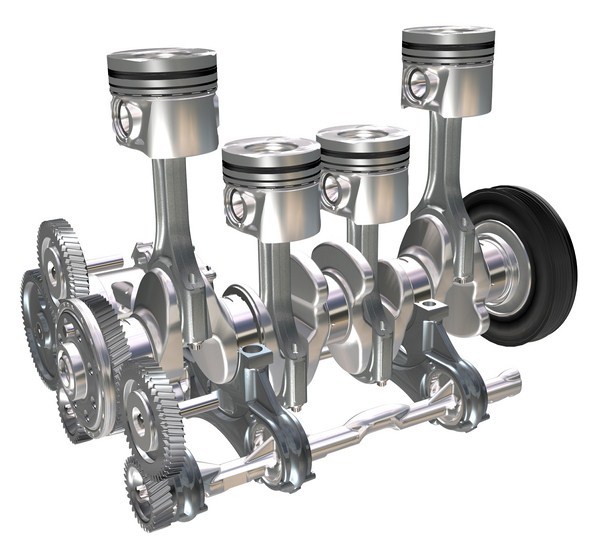
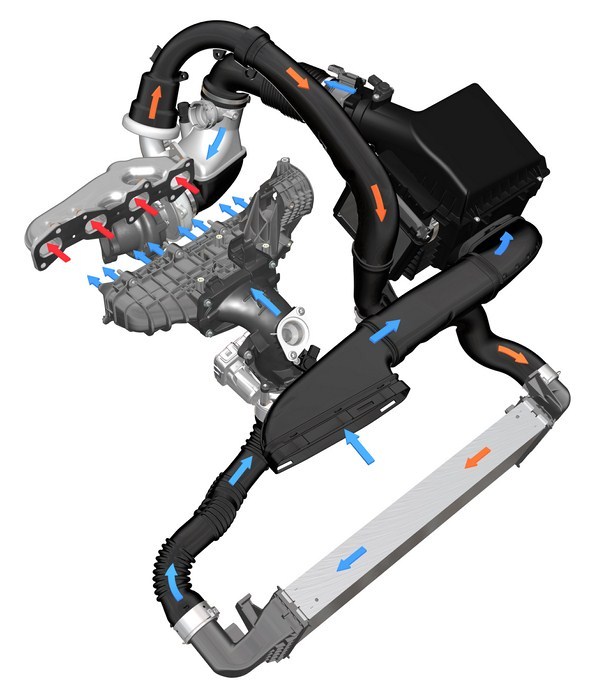
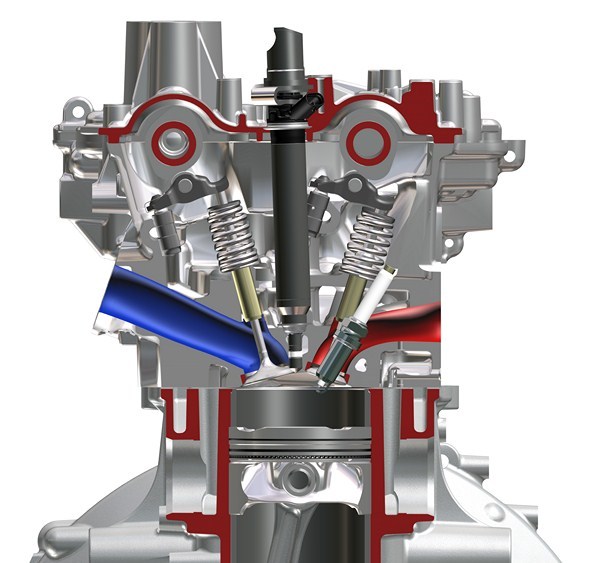
Engine test benches
Trial by ordeal
Before the new engines were allowed onto the roads for practical endurance trials, they had already absolved a series of tortures on the engine test benches of the test facility in Untertürkheim. 24 of the very latest engine test benches are installed on each floor of this imposing three-storey building. These 72 test benches are in operation by day and night, on 365 days of the year. Overall,
all of the petrol and diesel engines for the A-Class were subjected to some 256,290 hours on the test benches – that corresponds to 57.3 test bench years (based on 4500 operating hours per year). Tests for both transmissions
(six-speed and 7G-DCT), meanwhile, clocked up some 14,979,237 kilometres.
The test-benches can be used to simulate a wide variety of road and load cycle situations to reflect every conceivable operating profiles, e.g. hot and cold-starting, stop-and-go traffic and long-distance operation under a wide variety of conditions. Even steep mountain gradients can be simulated in the laboratory: a pivoting test rig is e.g. used to tilt the engine by up to 40 degrees to examine the effects on the oil circuit.
At various development stages the engines are subjected to accelerated stress tests. “This simulates stresses that no customer can achieve,” says Thomas Uhr, who is responsible for the workshops at the Mercedes-Benz development
centre and for powertrain testing. The test-bench programmes have a duration of 500 to 2400 hours, with large proportions under full load and partial load. Thermal characteristics and component durability are tested under full load conditions, however particularly low loads can also be a real torture for an
engine in the form of e.g. engine oil sludging. Other tests include heavy
stresses such as cooling the coolant from 110°C to approx. 25°C within a max. of 60 seconds, and running the engine up to its rated speed under full load when the coolant is cold. Thomas Uhr: “We test our engines more intensively than any other manufacturer.”
The new OM 607 diesel engine absolved more than 25,000 hours on the test-benches, for example, before it received approval for use in the A-Class. A total of more than 2700 test engines making up the various engine models series were built for testing, along with 2200 transmissions.
The energy generated by the test engines is recovered as fully as possible. The engine testing facility in Untertürkheim is certified as a combined heating and power plant: only active equipment is used to monitor and measure engine power. This power is not used to propel a vehicle as in normal use, but rather converted into electrical energy and fed into the plant’s power network.
In addition to long-term durability, fuel consumption, emissions and
driveability in conjunction with the transmission are the major development goals. This requires enormously painstaking dynamometer tests followed by practical trials on the roads. These include test drives at -30°C in northern Sweden, or at over 40°C and an altitude of 2500 metres in Spain. On top of this are diverse test benches trials involving the climate tunnel and altitude
chamber, where altitudes of up to 4000 metres can be simulated. As part of a separate programme there is also the endurance test, something of a service life compression test, at which a customer mileage load of 250,000 km is
simulated on the high-speed oval.
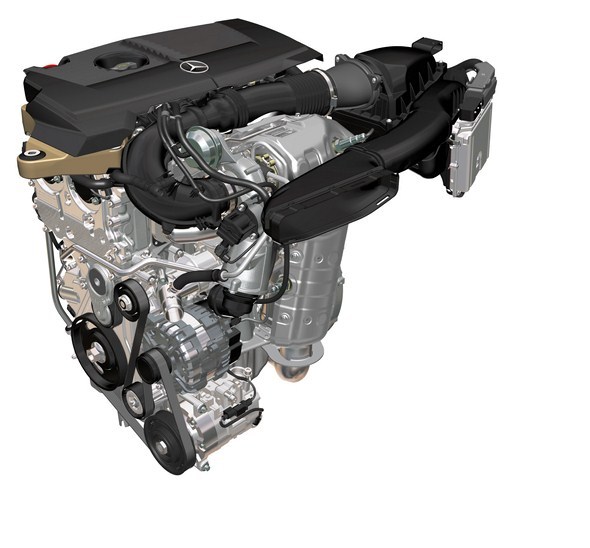
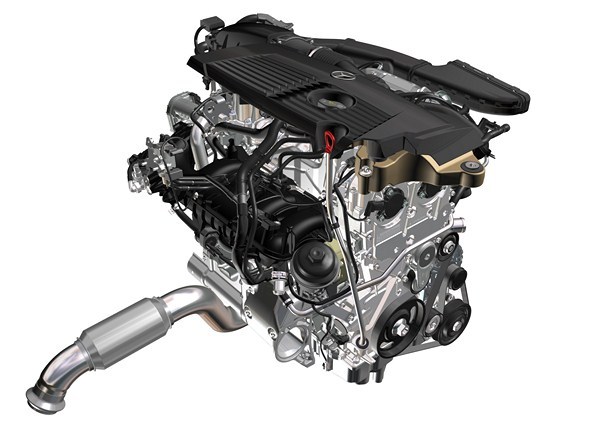
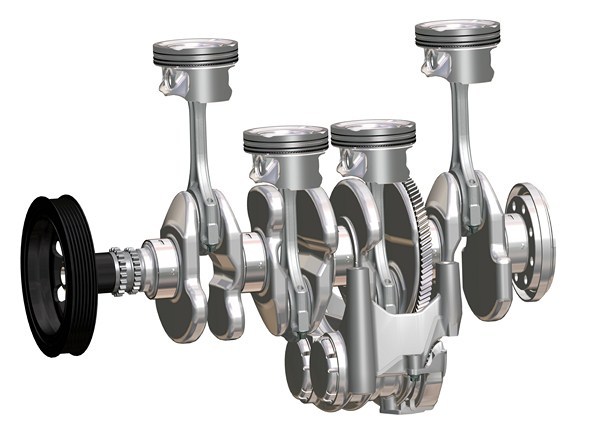
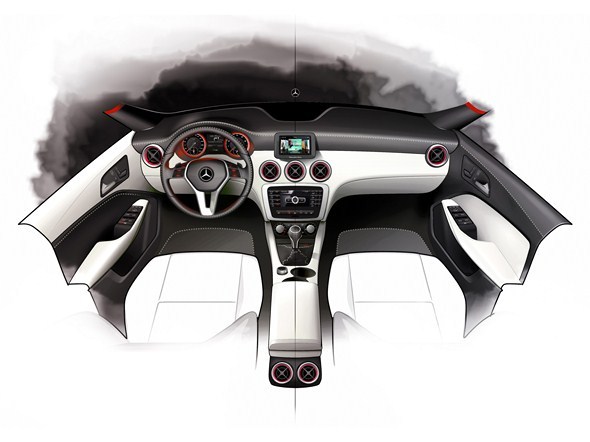
The 7G-DCT dual clutch transmission
Dynamic and efficient
Drawing on over 50 years of experience in the development and
production of automatic transmissions, Mercedes-Benz ventured into new technical territory with the 7G-DCT dual clutch transmission: the new system is an automated three-shaft manual transmission consisting of two subtransmissions, each with its own clutch. Both actuation of the clutches and gear shifting take place fully automatically and without any interruption in tractive power. This allows a particularly comfortable but nevertheless dynamic mode of driving.
Thanks to its seven gears it offers an exceptionally large spread of up to 7.99. This means that a very short transmission ratio is available when moving off on an uphill slope with a high payload, for example, while during cruising the engine speed can be lowered considerably. The efficiency of this transmission leads to a nine percent improvement in fuel consumption compared to the CVT employed in the A-Class to date, and betters the consumption with a manual transmission.
At a length of 367 millimetres and a weight of 86 kilograms, the 7G-DCT is more compact and lighter than the transmissions in this torque class which have been available on the market to date. The clutches take the form of oil-cooled multi-disc clutches. The specially developed hydraulic fluid is actively cooled, thus ensuring correct functioning of the transmission even under
extreme conditions, despite the comparatively low filling level of six litres. Excess engine heat can also be transferred to the transmission, which
improves its efficiency.
For the first time on this type of unit, the transmission is supplied with oil by two oil pumps – one mechanical and one electric. The electric pump maintains the oil pressure when the engine is switched off via the start/stop function. This means that the transmission is immediately operational when the engine is restarted and the vehicle can move off again without any delay. In addition, the electric pump is able to support the mechanical pump when peak loads apply, enabling a more compact and efficient design for the mechanical pump.
Another new feature is electric activation of the hydraulics for the parking lock, which is locked by mechanical means. This “park by wire” function
enables the transmission selector lever to be positioned as desired: it is located in the form of a steering column lever on the right behind the steering wheel in the A-Class. In combination with the electric parking brake, additional space has thus been created in the centre console for additional stowage facilities.
Three gearshift modes are available to the driver:
- ECONOMY: in this mode, the transmission performs gearshifts fully
automatically and particularly comfortably. The gears are selected with due regard to a particularly economical style of driving at low revs - SPORT: the transmission performs gearshifts fully automatically. The shift and response times are shorter, with gearshifts at higher engine speeds
- MANUAL: in this mode, the driver operates the transmission manually via shift paddles behind the steering wheel. The engine speeds at which the gears are shifted can therefore be freely chosen
In ECO or Sport mode, the driver is still able to intervene manually in the
gear-shifting process via the shift paddles. The transmission reverts to the
selected automatic mode after the paddles have remained inactive for twelve seconds, or after a longer delay when driving downhill or on winding roads.
A key factor contributing to the overall efficiency and dynamism of the A-Class is the closely coordinated operation of the transmissions and engines. A
continuous exchange of data between the control units ensures that the
engines run at the ideal operating point at all times. The 7G‑DCT transmission is manufactured at Daimler’s Stuttgart-Hedelfingen plant.
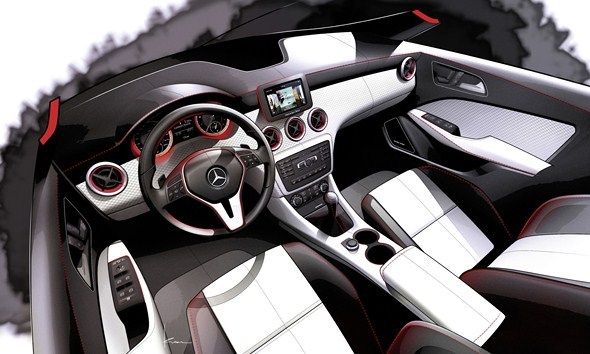



The six-speed manual transmission
Comfortable manual gearshifts
The new six-speed manual transmission was developed in parallel with 7G-DCT. It is extremely compact and shares a number of common parts.
The three-shaft transmission is also very compact (length 345 mm) and light (dry weight 46 kg) and incorporates a number of special features for
particularly pleasant gearshifting. An integrated magnet on the gearshift shaft is detected by a Hall sensor. The idle position is identified in this way, making the start/stop function possible. The signal for reverse gear activates the
reversing lights.
The large spread of 6.7 allows a reduction in engine speed while at the same time ensuring that sufficient tractive power is available when moving off with a fully laden A-Class and trailer up to a gross weight of 3.4 tonnes. The clutch is operated hydraulically and the gears are actuated via cables.
The overhead camshaft with third and fourth gears and the reverse gear do not run in the oil bath. This reduces drag torque, thus facilitating gear shifting at low temperatures in particular. The three-cone synchronisation of the first two gears serves the same purpose, while the following gears are provided with two-cone synchronisation. The weight-optimised cast aluminium shift forks are installed on anti-friction bearings on the shift rods, in order to reduce the shift forces.
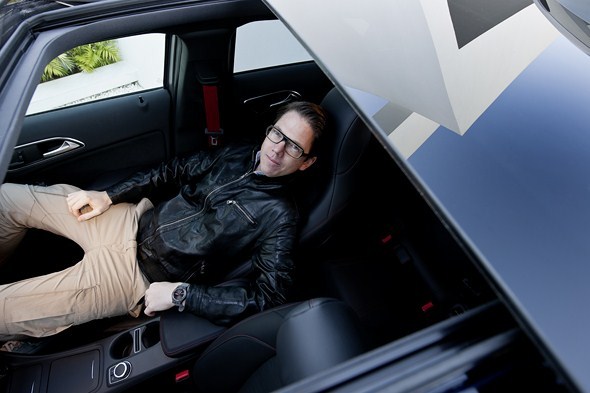
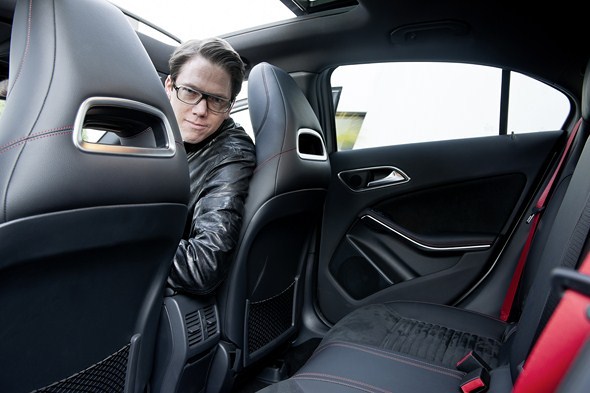
The chassis and suspension
Agility and refined sportiness
Refined sportiness means maximum agility combined with the sense of safety, unspoilt driving stability and high levels of ride comfort which are all typical of the brand. The suspension of the new A-Class has a four-link rear axle, electromechanical power steering with assistance functions and ESP® with “Extended Traction Control” (XTC). During development, the suspension experts made intensive use of simulations and the driving simulators at the Mercedes development centre in Sindelfingen as part of the so-called digital ride and handling test.
The preconditions for achieving dynamic handling are excellent in the A-Class. This is because compared with its predecessor the centre of gravity (24 mm lower) and seating position (174 mm lower) has been reduced significantly. A new feature is the four-link rear axle: forces are absorbed by three control arms and one trailing arm per wheel. This means that longitudinal and lateral dynamics are virtually independent of one another. Wheel carriers and spring links are made of aluminium to reduce the unsprung masses. The goal was to achieve high lateral agility with high driving stability thanks to small sideslip angle on the rear axle.
Three chassis and suspension set-ups are available: the comfort suspension and optional sports suspension for sporty yet comfortable handling (in conjunction with the Dynamic Handling package or the AMG Sport equipment line). In addition, the A 250 Sport has a sporty, “engineered by AMG” high-performance suspension. Altogether this results in low dynamic rolling behaviour and low start-off pitch angle. Furthermore, the vehicle also has a reduced tendency to understeer in the higher lateral acceleration range: the driver is therefore able to control changes in direction with low steering input but high steering precision. When accelerating out of bends taken at speed, the tendency to understeer is reduced even further by “Extended Traction Control” (XTC): with this function, ESP® provides support in the form of directional stability by generating a yaw moment on the front and rear wheels located
on the inside of the bend.
Steering: mechanical with electric assistance
The electromechanical steering of the A-Class has been redesigned. The
electric motor of the servo assistance system is now located directly on the steering gear as a dual pinion EPS system. The steering system makes an
important contribution to the vehicle’s overall efficiency, as the steering assist function only requires energy when steering actually takes place. A Direct-Steer system is available in combination with the Dynamic Handling package or AMG Sport equipment line. This provides a noticeably more direct steering ratio over the turning angle thanks to the variable ratio, and enhances the
vehicle’s handling and agility substantially. The steering conveys a high sense of safety, as the driver experiences a consistent and precise response to all steering movements.
The electric power steering also enables various steering assistance functions which are activated by the ESP® control unit. These include
- Countersteering in case of oversteering
- Corrective steering when braking on road surfaces offering different levels of grip (split-fraction braking)
- Mitigating the extent to which the front-wheel drive influences
the steering - Compensating crosswind and road gradients
- The electric power steering also makes Active Park Assist possible.
With all engine variants, the A-Class comes with disc brakes on all wheels. The callipers on the rear axle and the brake boosters are made of aluminium. A particularly convenient feature is the HOLD function, which is familiar from the larger model series: when stopping, for example at traffic lights, the driver merely has to press the brake pedal slightly more firmly and the brake will remain engaged until he moves off again. The brake is released automatically when the driver steps on the accelerator. On versions with manual
transmission, the Hill Hold function automatically prevents the vehicle
from rolling back unintentionally when starting on a slope.
The A-Class is equipped with an electric parking brake, which operates by means of actuator motors acting on the callipers of the rear axle. The parking brake is activated via a button under the light switch on the left of the
dashboard. This creates additional space in the centre console, as the
handbrake lever is no longer required. When the button is pressed at speeds
of over four km/h, the parking brake acts as an emergency brake, activating all four wheel brakes via the ESP®‘s hydraulic unit.
In conjunction with the 7G-DCT automatic transmission, the parking brake offers a particularly convenient mode of functioning: when the driver
accelerates sufficiently after fastening their seat belt, the parking brake
is released automatically.
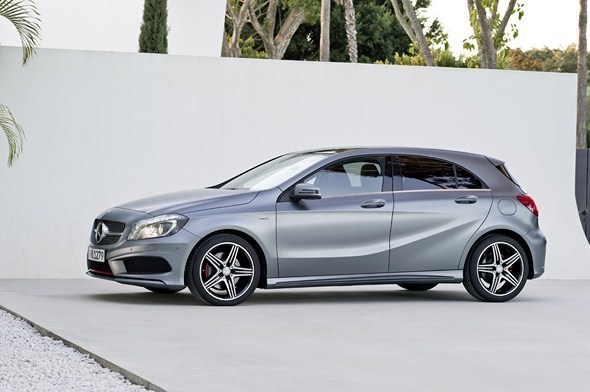
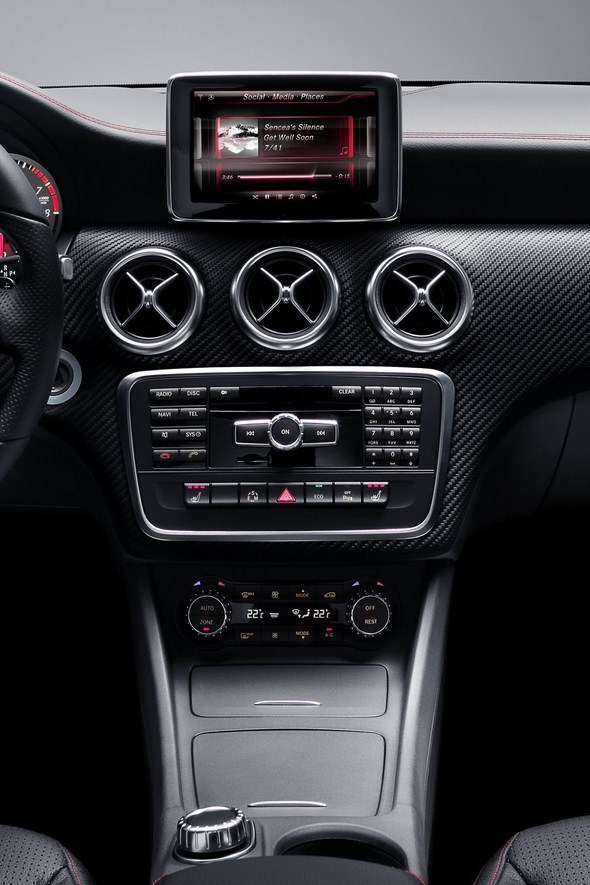
TIREFIT and electric pump as standard
Getting home safely with a flat tyre
The A-Class does without a spare wheel well. This saves space and weight –
the latter contributing to efficiency. In western and central Europe, all versions come as standard with the TIREFIT system comprising tyre sealant and an electric pump as well as a tyre pressure loss warning system which displays
a warning in the instrument cluster in the event of a marked pressure loss.
Input variables for the system are the speeds of the four wheels, which are recorded by the ABS sensors. A relative comparison of all measured wheel speeds reveals the divergent speed of a wheel in the event of a pressure loss in the tyre. As wheel speeds are also influenced by other dynamic variables, such as tyre slip, slip angle or cornering, the sensor signals from driving assistance systems such as ESP® and ADAPTIVE BRAKE (including ABS and ASR) also receive due consideration in assessing the wheel speeds.
Tyres with run-flat capability are optionally available. These so-called MOE tyres (“Mercedes Original Extended”) feature the latest generation of run-flat technology, offering the same ride comfort as conventional tyres, despite
reinforced sidewalls. In the event of a flat tyre, the journey can be continued at 80 km/h. The possible range is then around 30 kilometres when there is no air pressure whatsoever in the tyre concerned, or otherwise up to 300 km –
sufficient to return safely home or to reach a Mercedes-Benz partner. The MOE can be combined with all light-alloy wheels which are available for the A-Class.
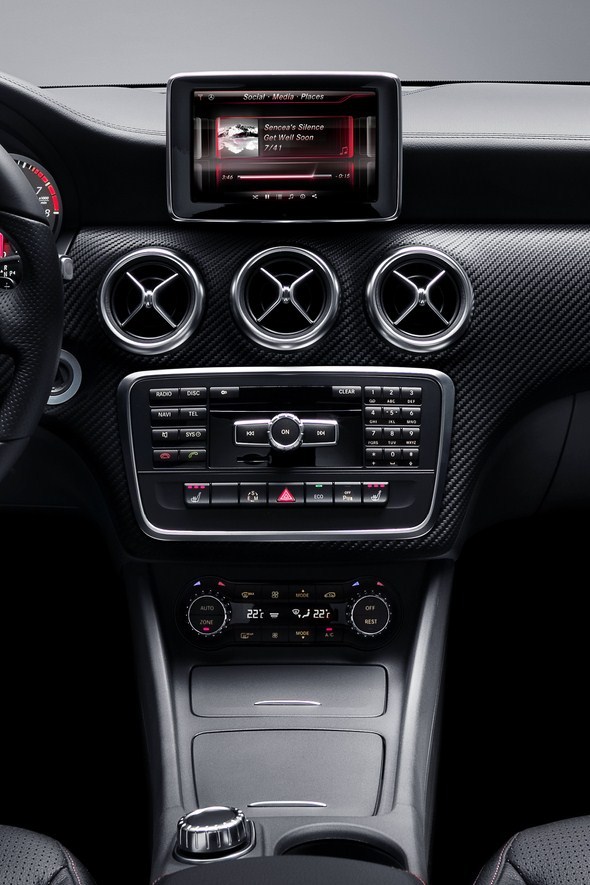
Multimedia systems
Always on
Mercedes-Benz has now integrated the iPhone® comprehensively into the user experience of the new A-Class. Drivers will now have access to all
of the key content of their iPhone®. This content can be viewed via the
in-vehicle display and the device operated via the controller on the centre armrest, all of which is made possible thanks to the Drive Kit Plus for the iPhone® and an app concept developed by Daimler in-house. In addition, with COMAND Online drivers can enjoy a fully integrated multimedia system, while with the Audio 5 USB (standard) and the Audio 20 CD there is a choice of two audio systems to suit every budget.
With the seamless integration of the iPhone® into the vehicle in conjunction with the new revolutionary user interface design, Mercedes-Benz is able to offer the Facebook generation a natural home on four wheels in the new
A-Class. In addition to Facebook, Twitter and so on, the Drive Kit Plus for
the iPhone® (expected to be available as an accessory from the fourth quarter of 2012, and as an optional extra ex-factory from the first quarter of 2013) together with Daimler’s app concept, is able to bring other digital lifestyle
services and content into the vehicle. The highlights include:
- Personalised internet radio by AUPEO! Personal Radio, which offers radio stations that compile an individual program for listeners and
recommends similar music by genre or artists based on personal taste - Siri voice control system (expected to be available from the first
quarter of 2013) - The advanced navigation software from Garmin, with internet-based real-time traffic information, online POI searches and 3D map display, all of which work even in combination with the entry-level multimedia system Audio 20
- A socially interactive experience involving “sharing”, “posting” and the integration of music and other content from social networks including text-to-speech
- An intuitive “car finder” which automatically stores the vehicle’s
location. Pedestrian navigation makes it completely easy to find your way back to the car
- An intuitive “car finder” which automatically stores the vehicle’s
New here is also the contextual and location-based display of menu content under the headings “Social”, “Media” and “Places”. The basic logic behind this was presented by Daimler for the first time in January of this year at the
Consumer Electronics Show (CES) in Las Vegas. Appearing under the heading “Social”, for example, are the various friends and latest news from the social networks.
The user interface design is unique and revolutionary. Transparent symbols are illuminated in red to create three-dimensionally arranged navigation levels. Within the three-dimensional illustration provided by this menu structure, the user can move intuitively between the various functions in fluid, animated transitions. The user interface concept was designed and implemented by
designers and engineers in the Mercedes-Benz research and development
centre in Palo Alto, California/USA. Enlarging the display of content on the screen to an appropriate format for use in a vehicle and allowing it to be
controlled through the ergonomically positioned Controller on the centre
armrest makes operating the system both safe and easy.
The iPhone® is connected through an interface developed by Mercedes-Benz Accessories GmbH. This allows content to be fed directly from the graphics output of the device to the display of the vehicle. At the same time, the iPhone® is both powered and charged automatically while it is being used.
Full iPhone® integration is not only possible in conjunction with the COMAND Online multimedia system. All functions, including navigation, can also be used even with the entry-level Audio 20 system.
Overview of other multimedia systems
COMAND Online also offers internet access. Customers can either surf the web as they wish while the car is stationary or call up a Mercedes-Benz app whose particularly fast page loading and simple operation make it suitable for use while driving. Integrated apps include Google™ Local Search and Weather and the facility for downloading a route which has previously been configured on a PC using Google Maps and transmitted to the car. In addition, apps for Google™ Streetview and Google™ Panoramio are available for COMAND Online. Streetview enables locations all over the world to be seen in 360-degree perspective views and at street level. Panoramio allows access to millions of photographs which have been taken and uploaded by other uses at locations
all around the globe. Streetview and Panoramio thus provide comprehensive means of studying routes and checking out sights and destinations before
embarking on a journey. A new feature is the “News” app which enables news on politics, finance and technology to be called up online in the vehicle.
Information is displayed in such a way that it is clearly legible while on the move. Further apps, such as stock market news or a parking space finder,
can be also be accessed via the Mercedes online shop (www.shop.mercedes-benz.com).
The high-resolution colour display has a diagonal of 17.8 cm. The basic colour scheme of the central display is silver grey. Photos can be shown on the large screen and turned over manually, as in a slide show. Where the audio
equipment is concerned, too, new types of representation bring a fresh look and more convenient operation. The new Cover Flow function, for instance, sorts the title images of the music albums stored in a carousel-like form, so that the A-Class driver can easily leaf through their music collection – even if it is rather on the large side: the memory for compressed audio files (mp3, wma and aac formats) is now 10 GB in size.
Greatest convenience is afforded by the Music Search function, which enables drivers and passengers to search the hard disc, SD memory cards, USB sticks, CDs and DVDs for specific music tracks and artists. The search can be
according to various criteria, for instance album, music category or composer. If a name needs to be entered, the software will also tolerate spelling mistakes. The driver is therefore able to devote their full attention to the traffic. As a
further advantage, the occupants are able to search all the connected media and devices simultaneously.
The fast hard-disc navigation system of COMAND Online also has added
functions. New features include a 3D display with three-dimensional city views. Also new: routes covered can be recorded and repeated later, specific personal destinations can be imported via an SD card and four alternative routes can be displayed on the navigation map, one of them a particularly
economical variation. Mercedes-Benz customers in Europe receive the current cards for their COMAND Online multimedia system free of charge for three years. Authorised Mercedes-Benz dealers upload the updates for navigation data in 39 European countries into the navigation system when the customer visits their premises.
In Europe, COMAND Online also comprises Speed Limit Assist, which receives its information for traffic sign recognition via a camera and navigation
database. COMAND Online also includes the LINGUATRONIC voice-operated control system for audio, telephone and navigation. The new “One Shot” input function for the navigation system is particularly convenient, whereby the place and road can be spoken directly after one another. This function is
currently available in seven languages and significantly enhances ease of
operation. With COMAND Online and LINGUATRONIC, music can also be
conveniently searched for in the A-Class via voice control. The system first asks in which category it should conduct the search (artist, title, year). The category is selected by saying it or by saying the row number of the relevant category which appears on the screen. This is then followed by further
questions about title, artist or album.
Fitted as standard is the Audio 5 USB unit. In addition to an AM/FM tuner and an audio amplifier, it features a built-in three-line display. Portable storage media can be connected via the USB and AUX connectors in the centre console. A pre-installation option for iPhone® with hands-free function is also available as an optional extra for the Audio 5 system. If the iPhone® is connected to the vehicle via a cradle then the radio is muted during telephone calls. The
mobile’s battery is charged via the vehicle’s on-board power supply.
The Audio 20 CD system has a twin tuner, mp3-capable CD player and a USB connector in the centre console. The colour display has a diagonal of 14.7 cm. Thanks to a “cover art” function the title images of the music albums currently being played are shown if their details are stored in the audio file.
A top line in the Audio 20 CD’s menu navigation makes orientation easier and can be operated via the controller. The settings for the air conditioning are also displayed on the telematics screen (when in use), as is the fuel consumption over the past 15 minutes. The Bluetooth functions have also been extended:
the mobile’s phone book can now be automatically transferred en bloc when
connected, and wireless music reproduction is possible from Bluetooth-capable terminals. Plus text messages can also be displayed. As an optional extra the Audio 20 CD can be combined with a 6-disc CD changer, Media Interface,
harman/kardon® sound system, Convenience Telephony in the armrest, digital radio (DAB) and the new Becker® MAP PILOT entry-level navigation solution.
The Becker® MAP PILOT makes a low-cost navigation function, which is also suitable for retrofitting, available for the Audio 20 CD radio. Its advantages over aftermarket solutions include integrated operation via the central
controls, voice output via the vehicle’s loudspeakers and display on the
Audio 20 screen, a concealed location in the glove compartment and updating and expansion options via an internet portal.
Mercedes-Benz developed the “Logic7” surround sound system together with audio specialists harman/kardon®. Based on technology never before seen
in a car, this high-end system delivers three-dimensional sound as a natural 360-degree musical experience for all passengers. The audio signals are
distributed via a 450-watt multi-channel DSP amplifier connected to twelve high-performance loudspeakers. In conjunction with COMAND Online a
multichannel listening experience with Dolby Digital 5.1 and DTS is possible.
The Media Interface is available as an optional extra. The universal interface enables mobile audio devices such as an mp3 player or iPod® to be connected to the vehicle’s telematics system. These devices are then operated via the head unit, the central control unit or the steering wheel buttons. By making use of USB 2.0, the new generation of the Media Interface provides quicker display and extended data selection.

Production
At home in the centre of competence for compact cars
The first new A-Class vehicles will be rolling off the production line in Rastatt (Baden, Germany) from the September 2012. The entire factory has been
extended and modernised for this purpose, developing it into a centre of
excellence for compact vehicles from Mercedes-Benz at an investment volume of 600 million euros. In addition, a new factory has been built in Kecskemét, Hungary at a cost of 800 million euros. This is where the B-Class will initially be produced, in addition to Rastatt, to create more capacity for the A-Class at the plant in Baden and allow for more flexibility overall in the production of compact class vehicles. The company is thus investing a total of around
1.4 billion euros in the two plants. This follows on from Daimler AG’s
investment of around 900 million euros in the Rastatt factory for the
second-generation A-Class and B-Class between 2002 and 2005.
A new production building has been installed alongside the existing buildings in Rastatt. The new building houses the body shell shop. The body shell shop has a direct rail link, enabling the direct delivery and unloading of parts at the production shop. The additional body shell shop covers an area of around 66,000 square metres.
Parts from the local region are also to be installed here: after a construction phase of only twelve months, a new press shop opened in nearby Kuppenheim in May 2011 as part of Mercedes-Benz’s Gaggenau plant. This entailed
investments totalling around 70 million euros.
The new press shop is equipped with an interlinked press line, two gripper transfer presses and 24 welding lines with a total of 130 industrial robots for the purposes of component production. The new building has been provided with a sound-absorbing wall and double sound-absorbing doors on the side facing the local residents. All presses are additionally fitted with state-of-the-art vibration dampers which prevent the emission of vibrations into the
surrounding environment. The shop also incorporates an air-conditioned measuring centre, where the quality of the pressed parts and welded
components undergoes continuous monitoring.
Around 600 different components are produced in Kuppenheim: outer skin components, structural components and welded components for the
generations of the A- and B-Class and for Mercedes-Benz trucks. The press shop currently has a workforce of around 130. If production is running to full capacity in 2015, around 280 people will be employed at the plant. Pressed parts for the A and B-Class are also supplied by the Sindelfingen factory.
Integrated production set-up comprising Rastatt and Kecskemét factories
The completely new factory in Kecskemét, Hungary. was inaugurated in March 2012. It comprises a press shop, body shell shop, paint shop and assembly shop. The two factories form an integrated production set-up under the
direction of the Rastatt plant manager. Rastatt will serve as the headquarters for compact class production, with four model variants of the new compact class to be manufactured in Baden and two in Hungary. This set-up provides Mercedes-Benz with the necessary flexibility to respond to shifts in demands and to cope with the expected growth in the production volume. The Rastatt factory had a workforce of around 6100 at the start of 2012, and a further
500 will be employed in the course of the year. When the set-up is running
to full capacity, Kecskemét will employ around 3000.
Hungarian employees have been undergoing extensive training in Rastatt for some months now, while experts from Rastatt are on site in Kecskemét to
ensure a smooth start-up of operations at the factory. The two plants are linked by a regular bus service.
The plant in Rastatt commenced production operations in May 1992. Up until 1996 it initially produced the E-Class, and from 1997 it became home to the new A-Class. More than 2,100,000 vehicles making up the first two
generations of the A-Class have been sold.





